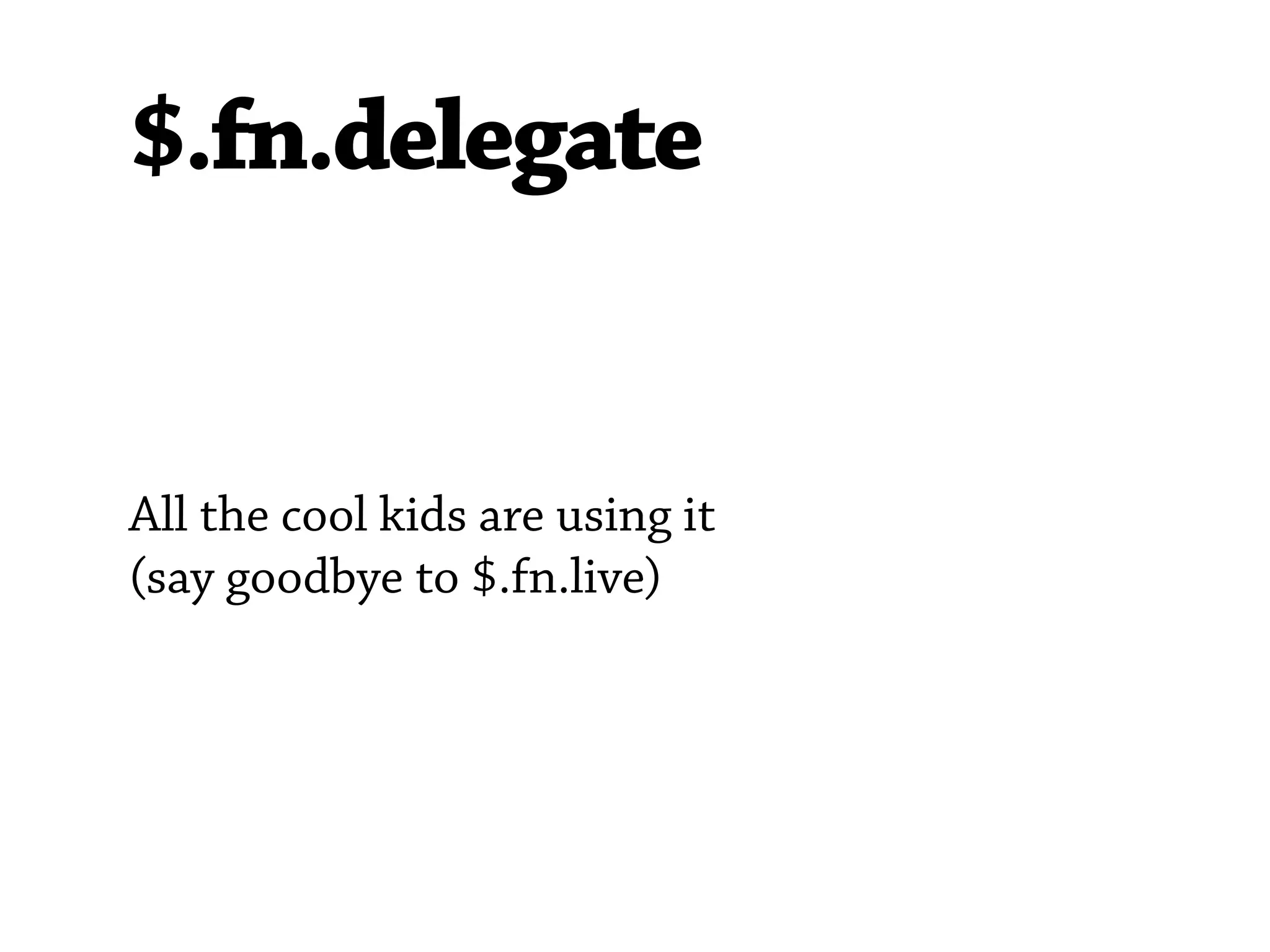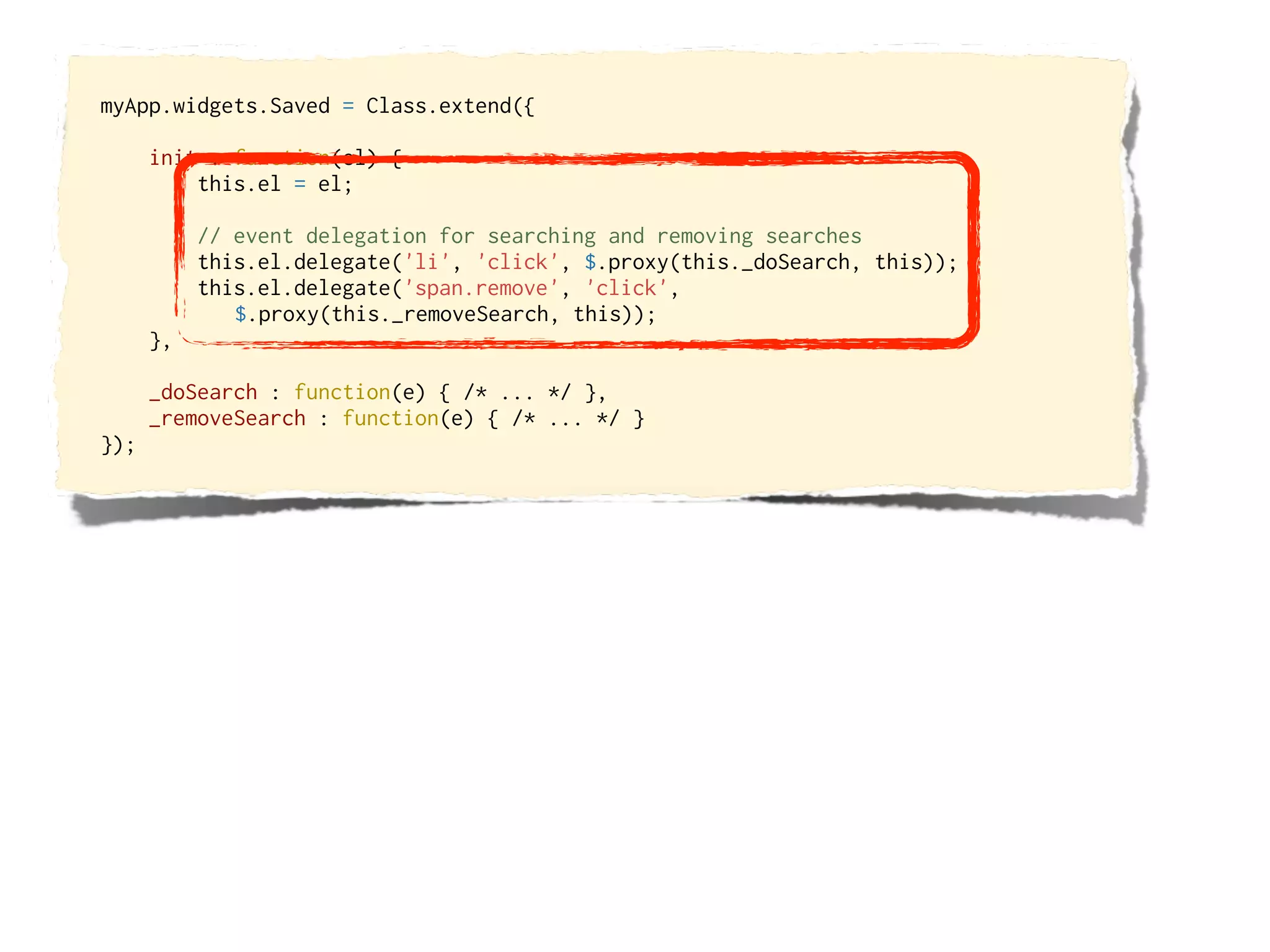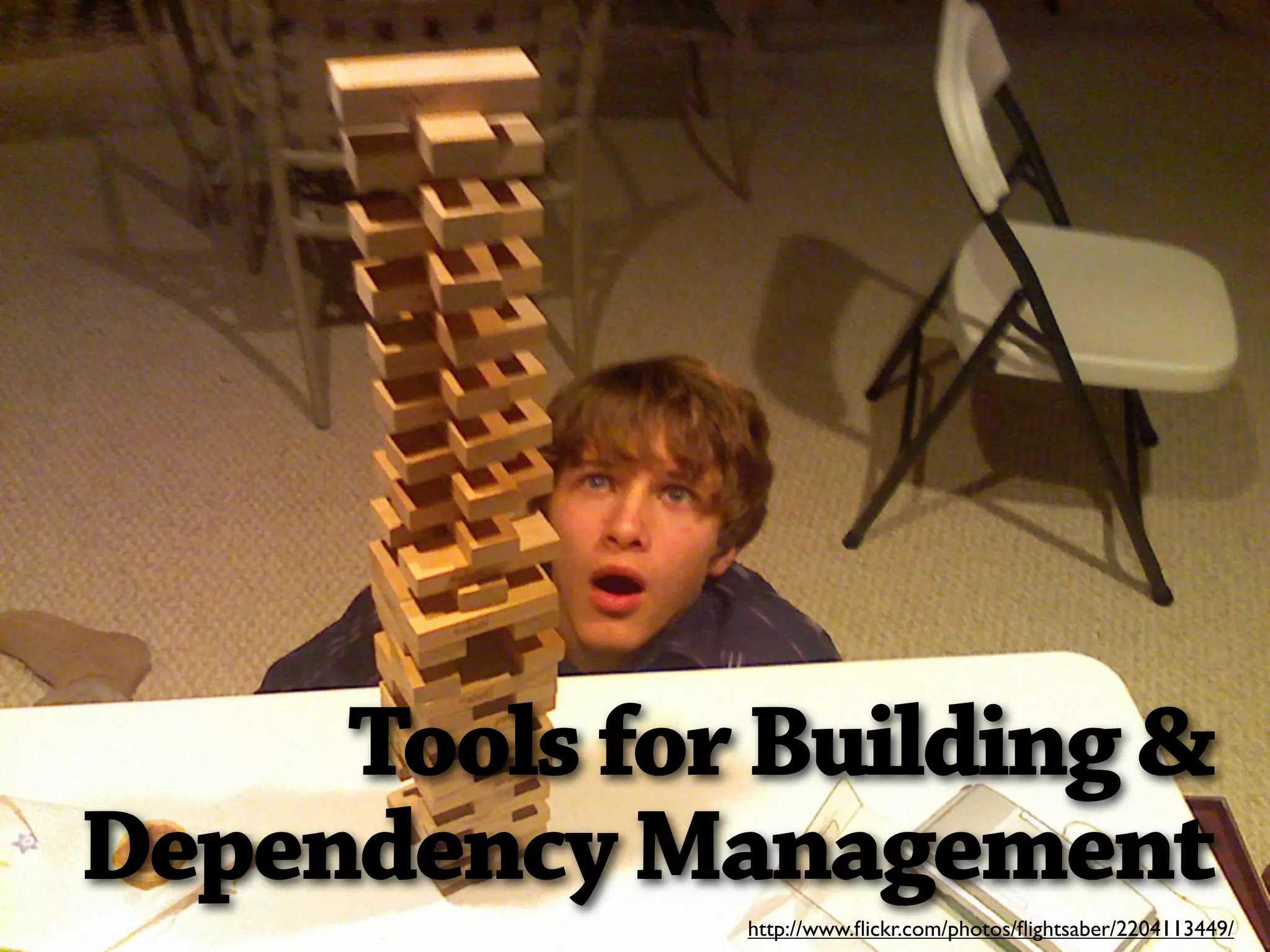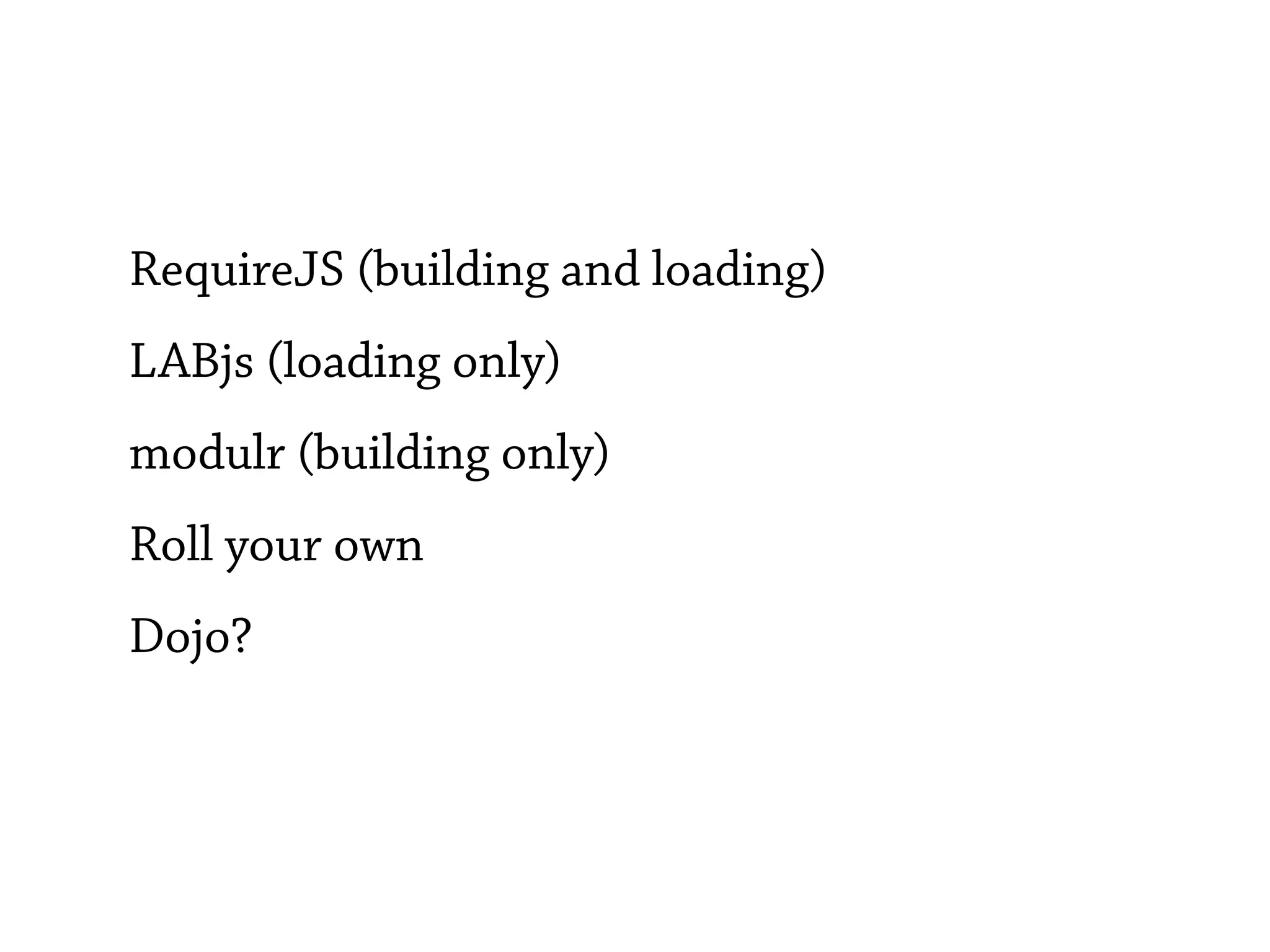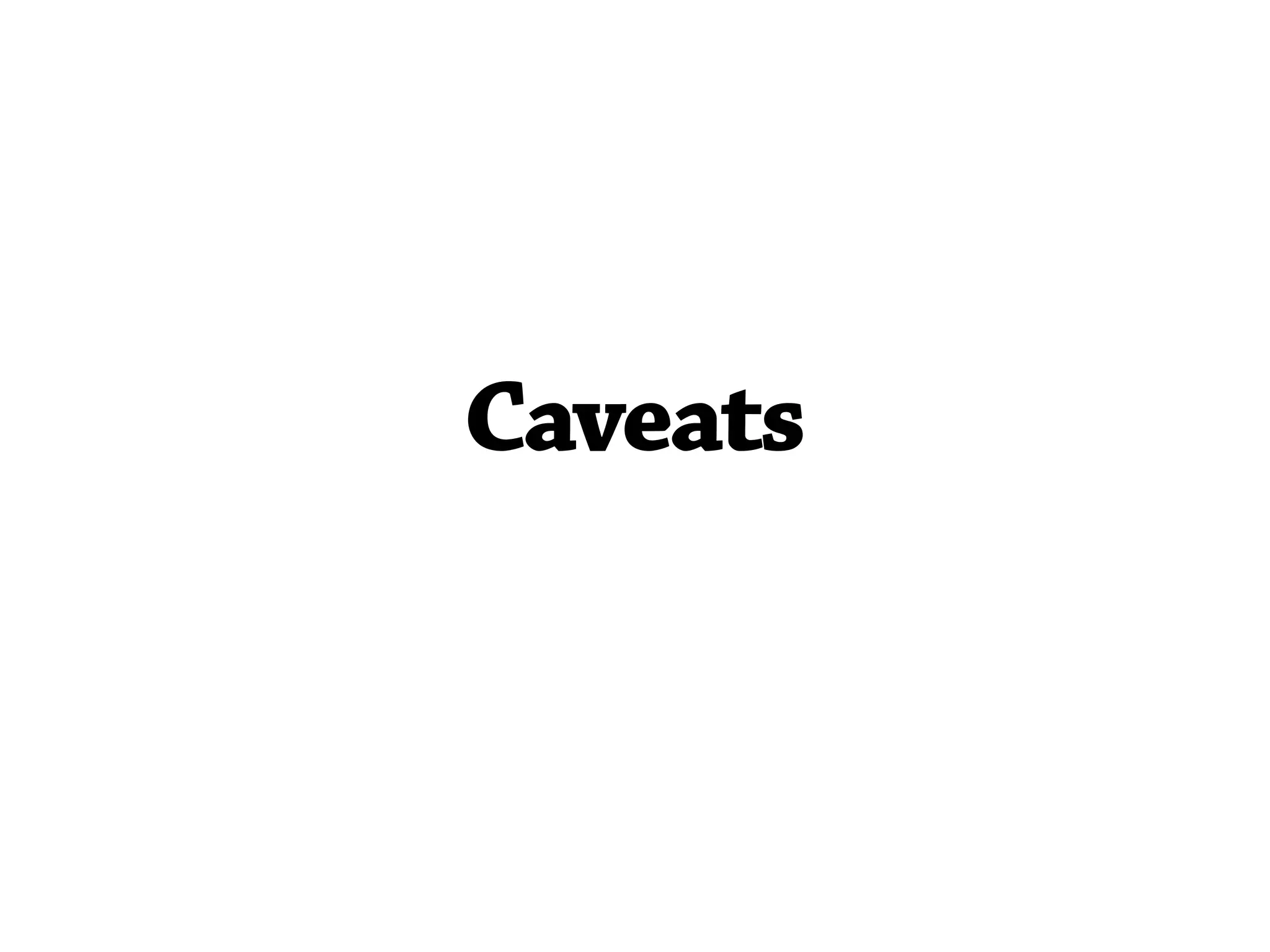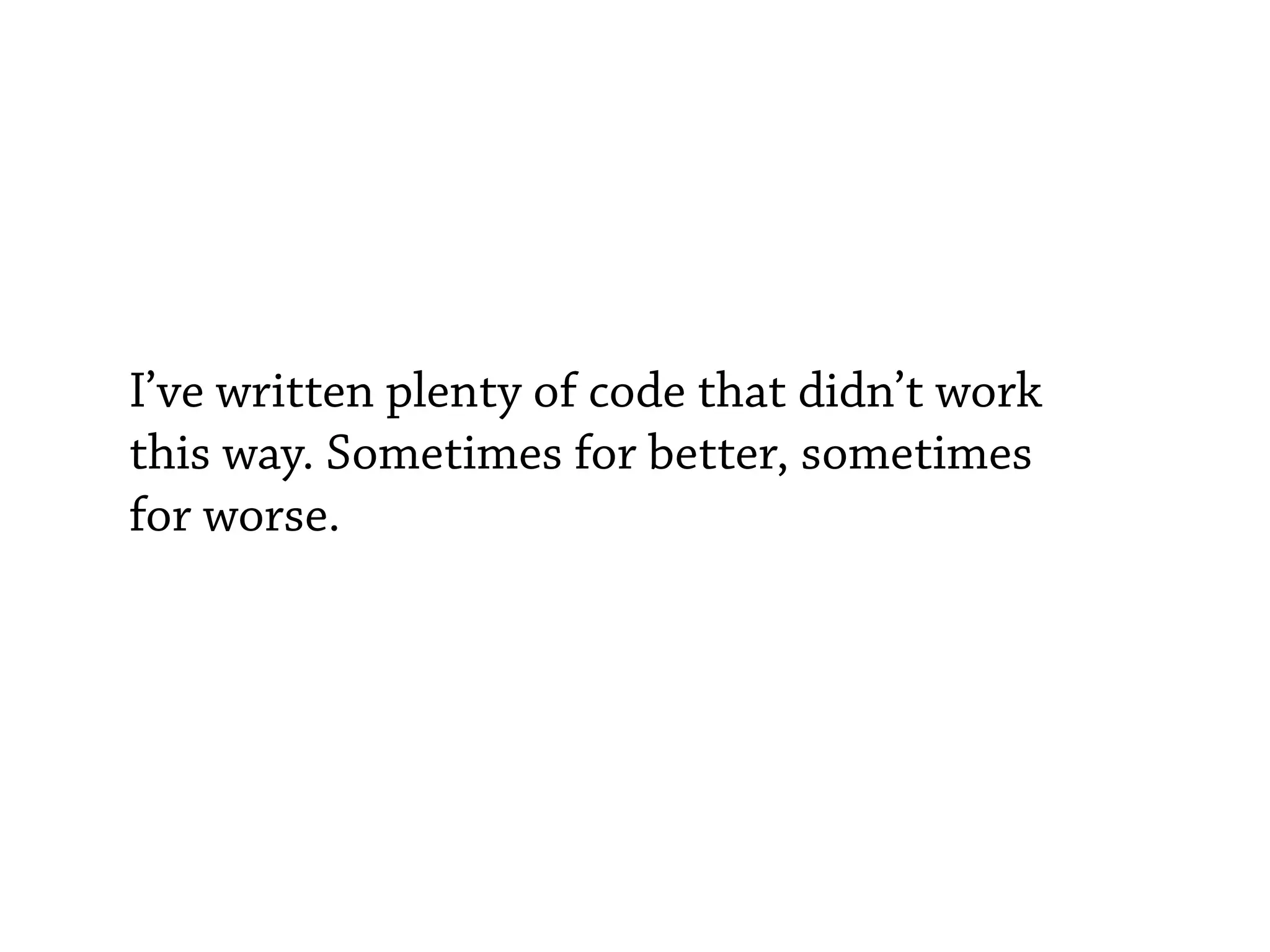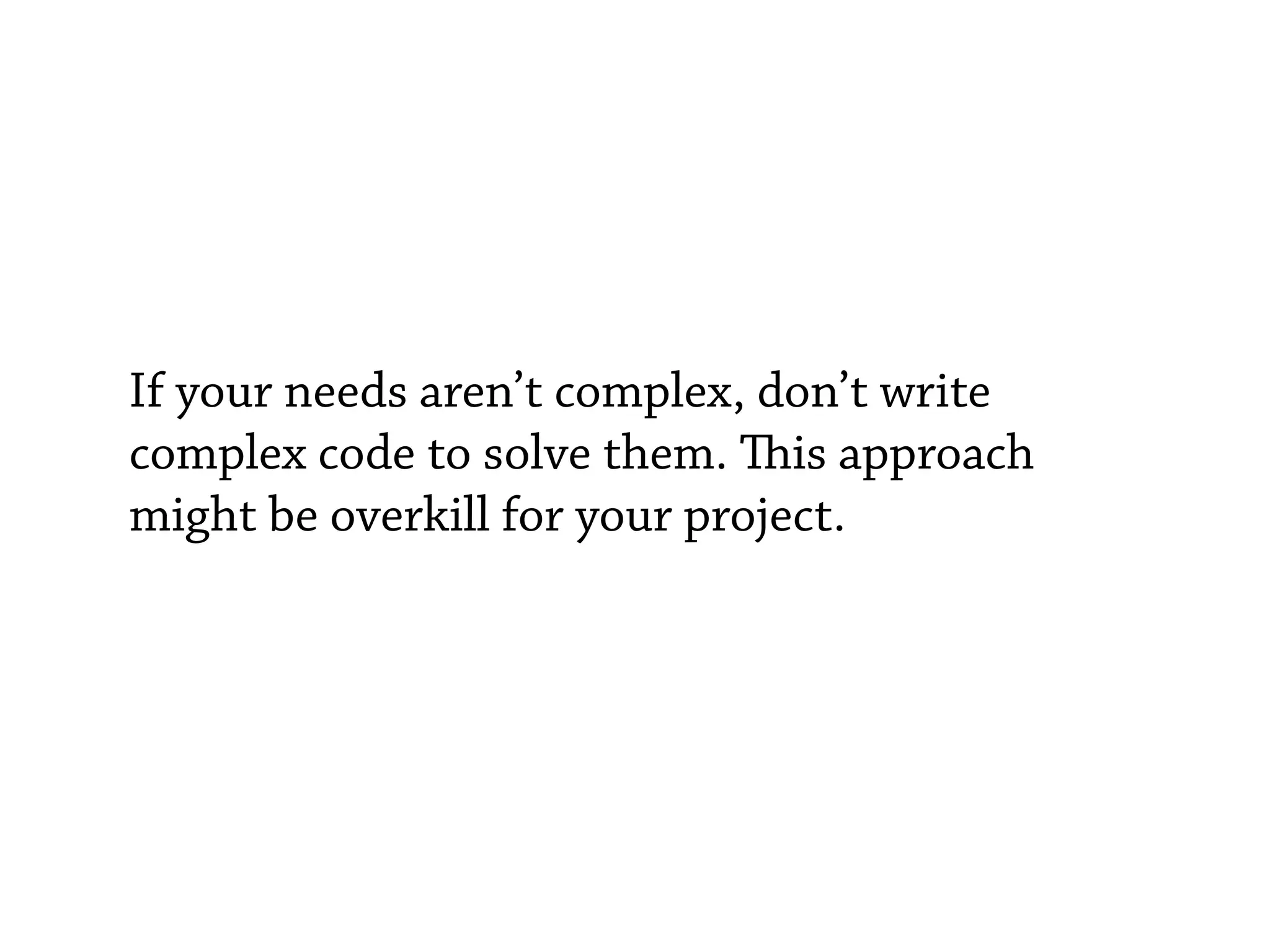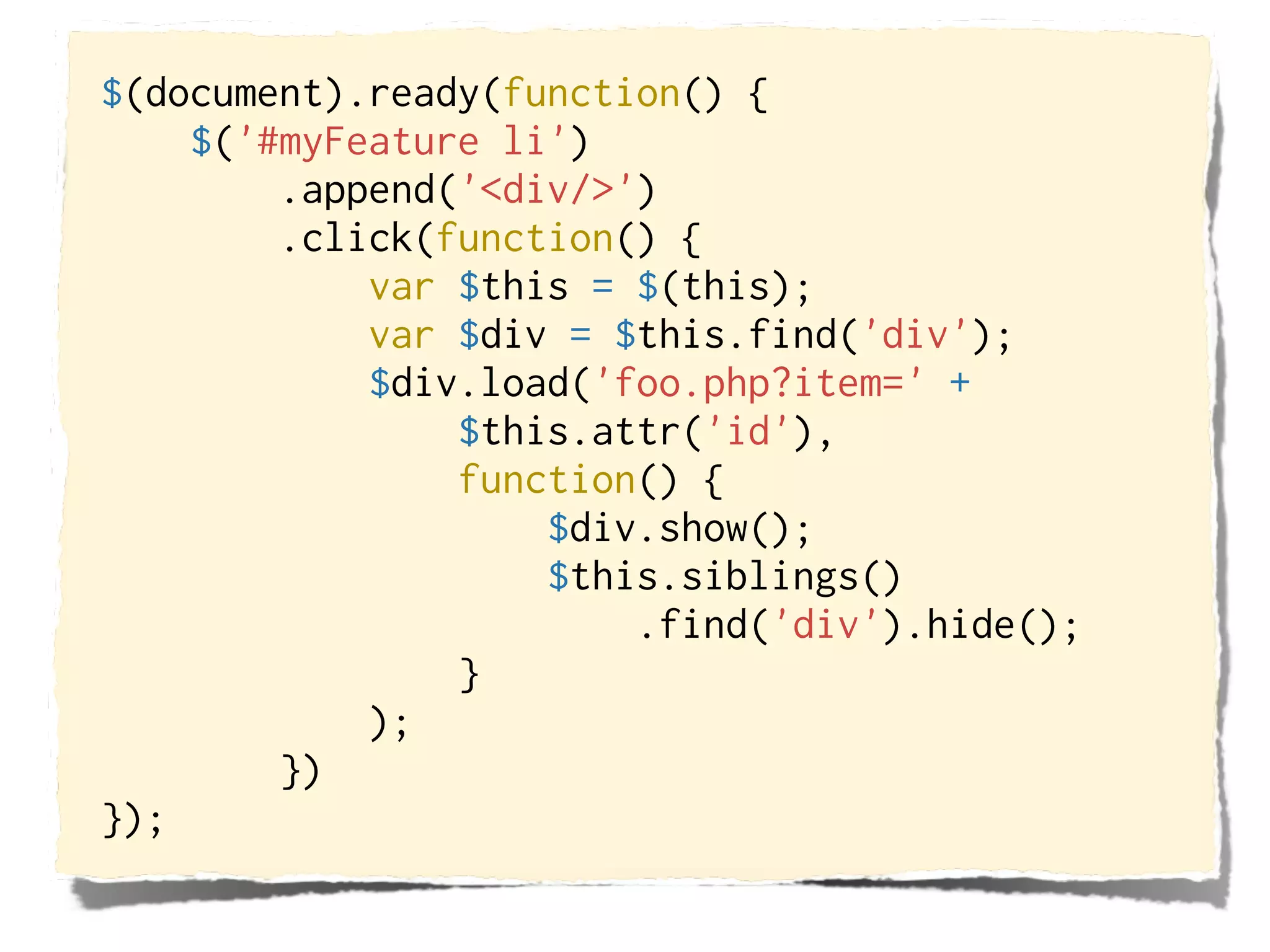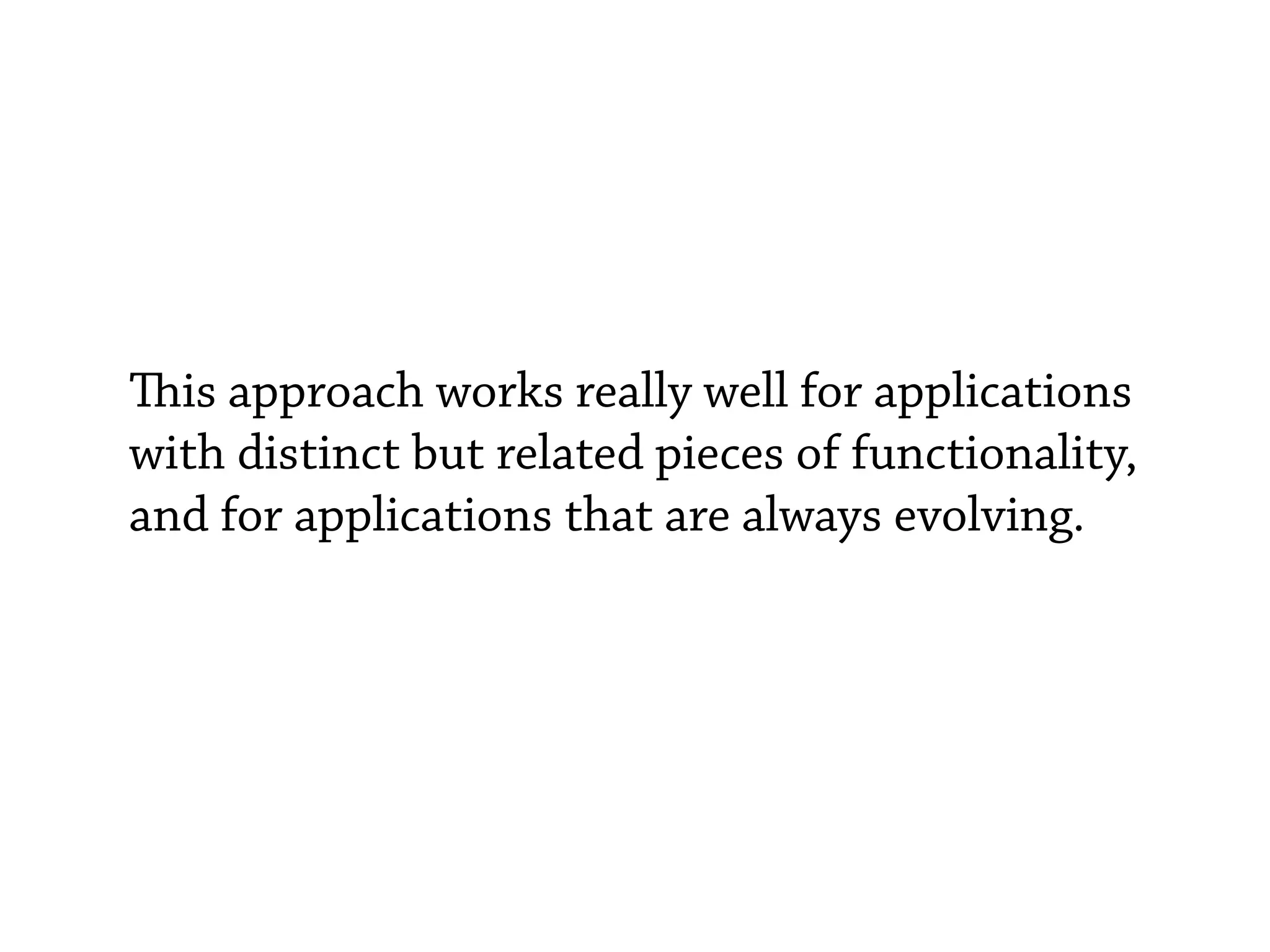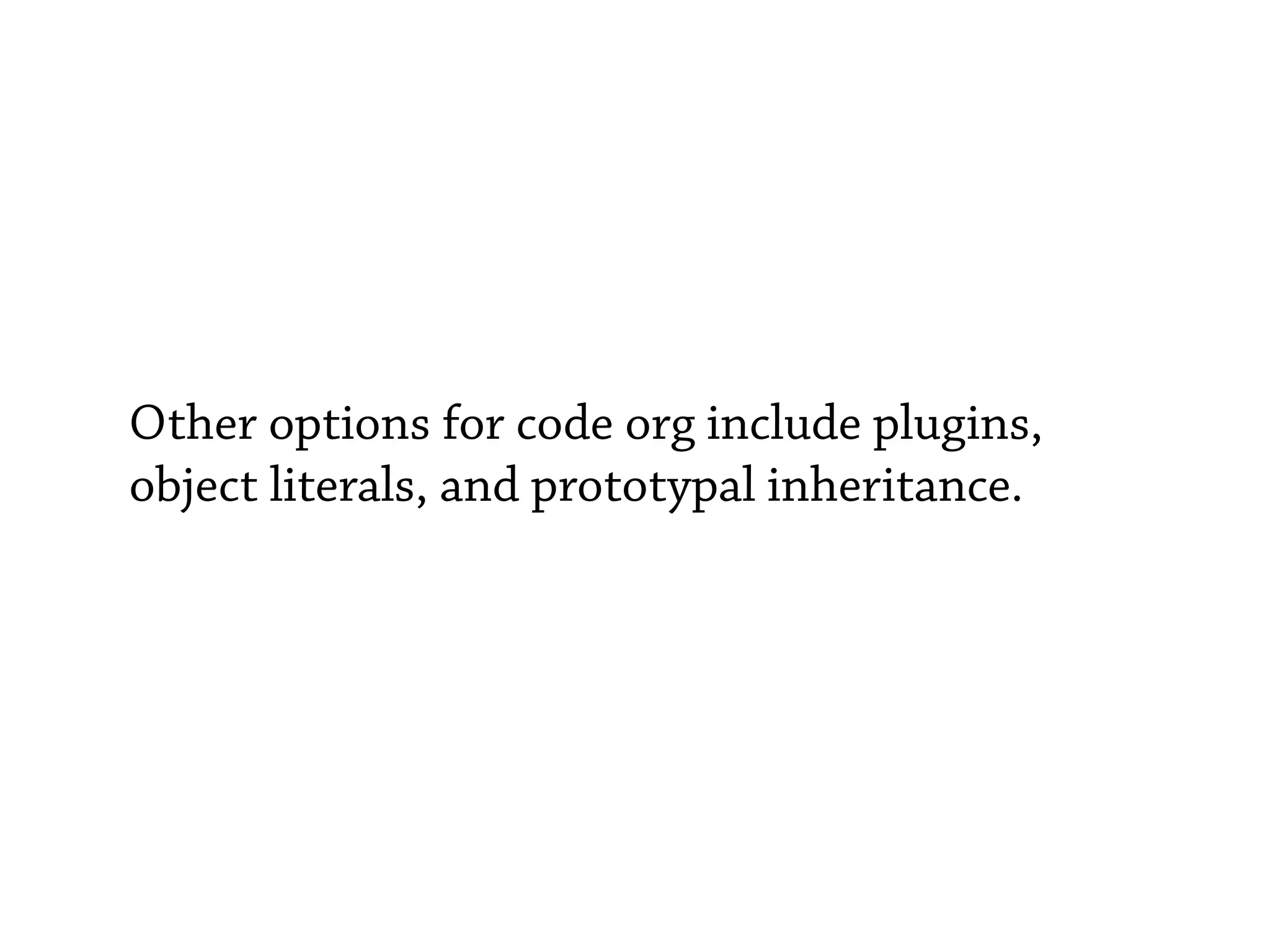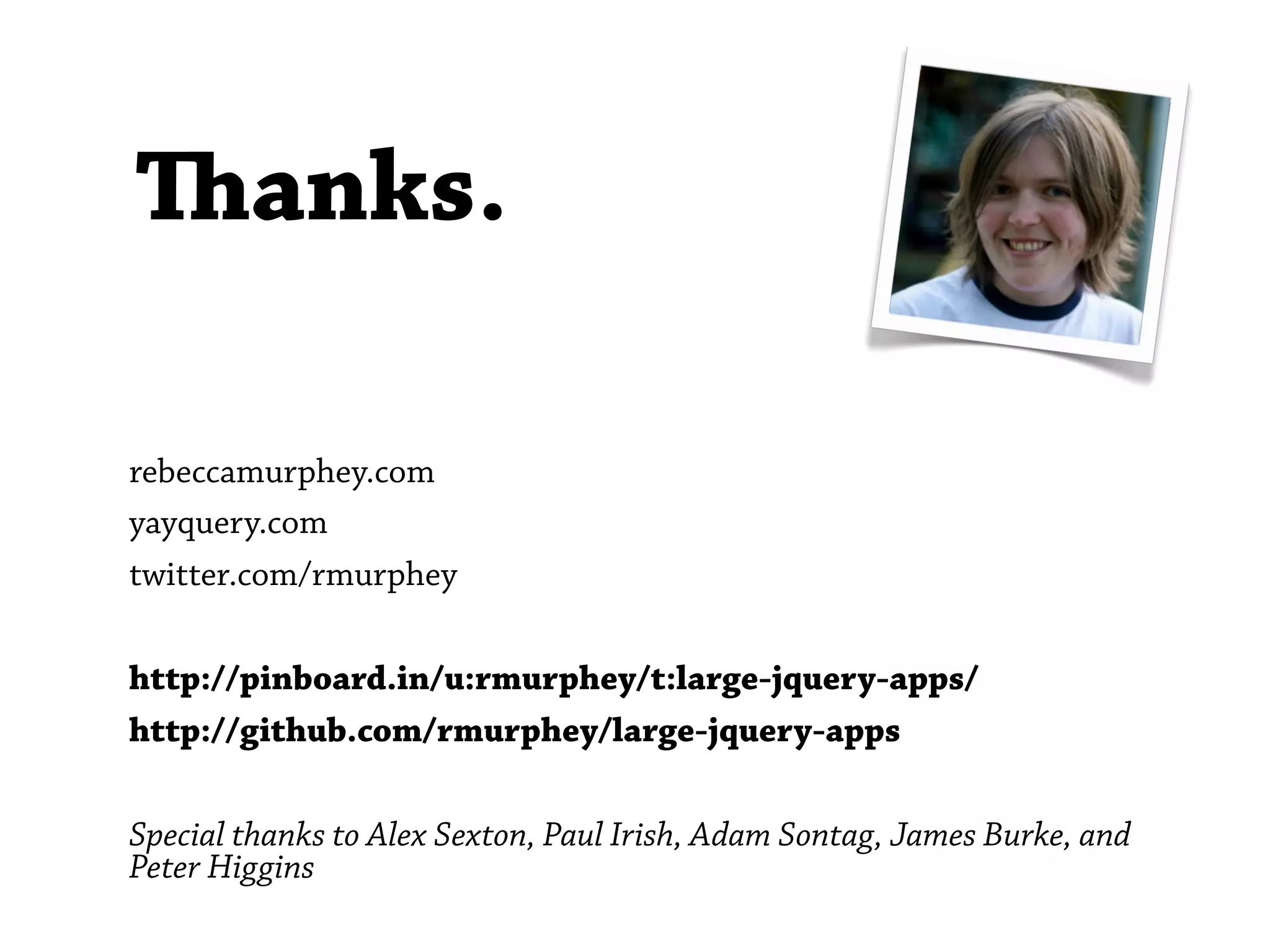The document discusses best practices for building large applications using jQuery, emphasizing the importance of modular code organization and separating functionality into distinct components. It advocates for using jQuery primarily as a DOM and AJAX tool, employing patterns like classes for better structure and maintenance. Additionally, it suggests utilizing the server for data handling and client-side templating for markup generation.
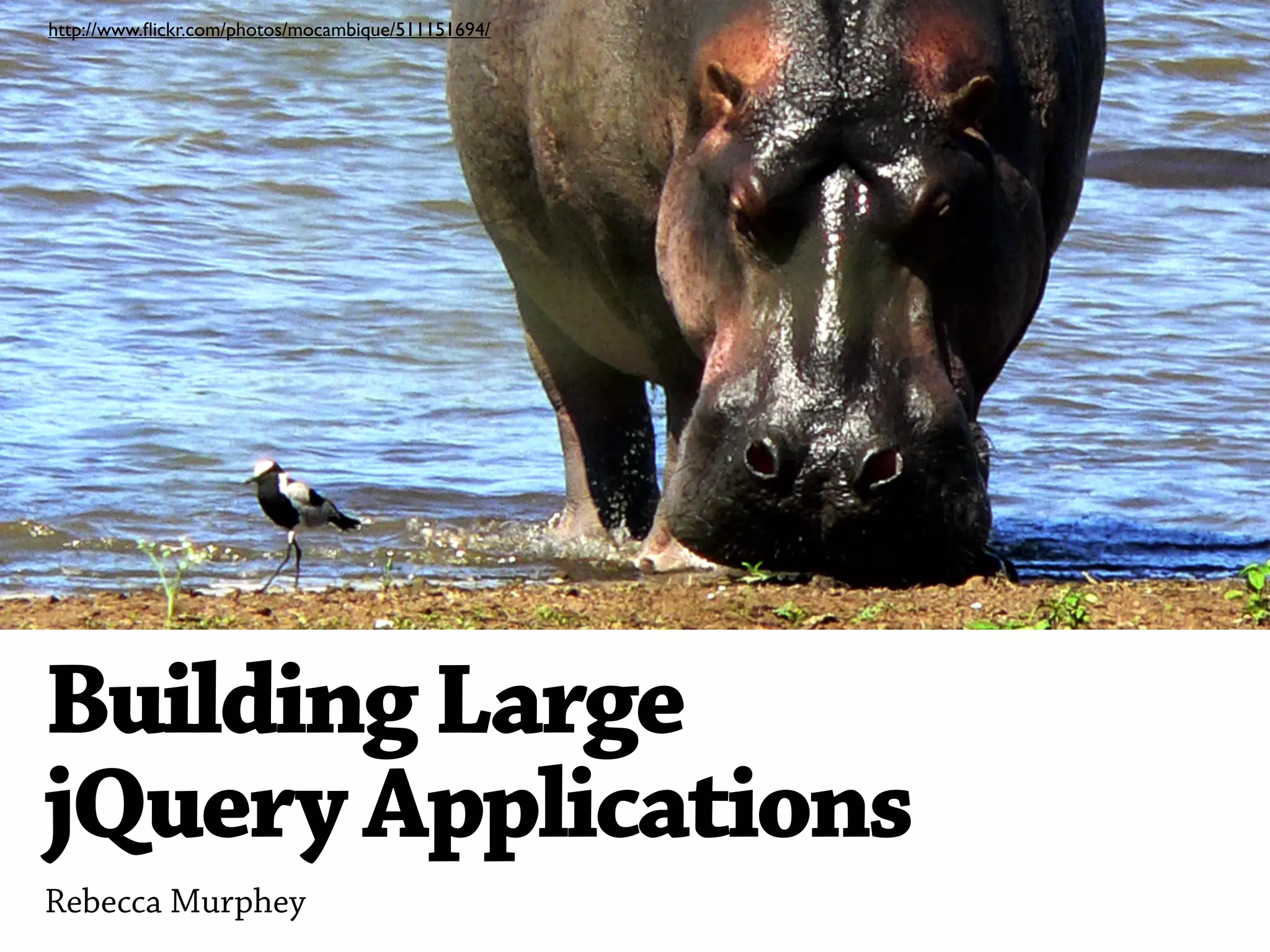
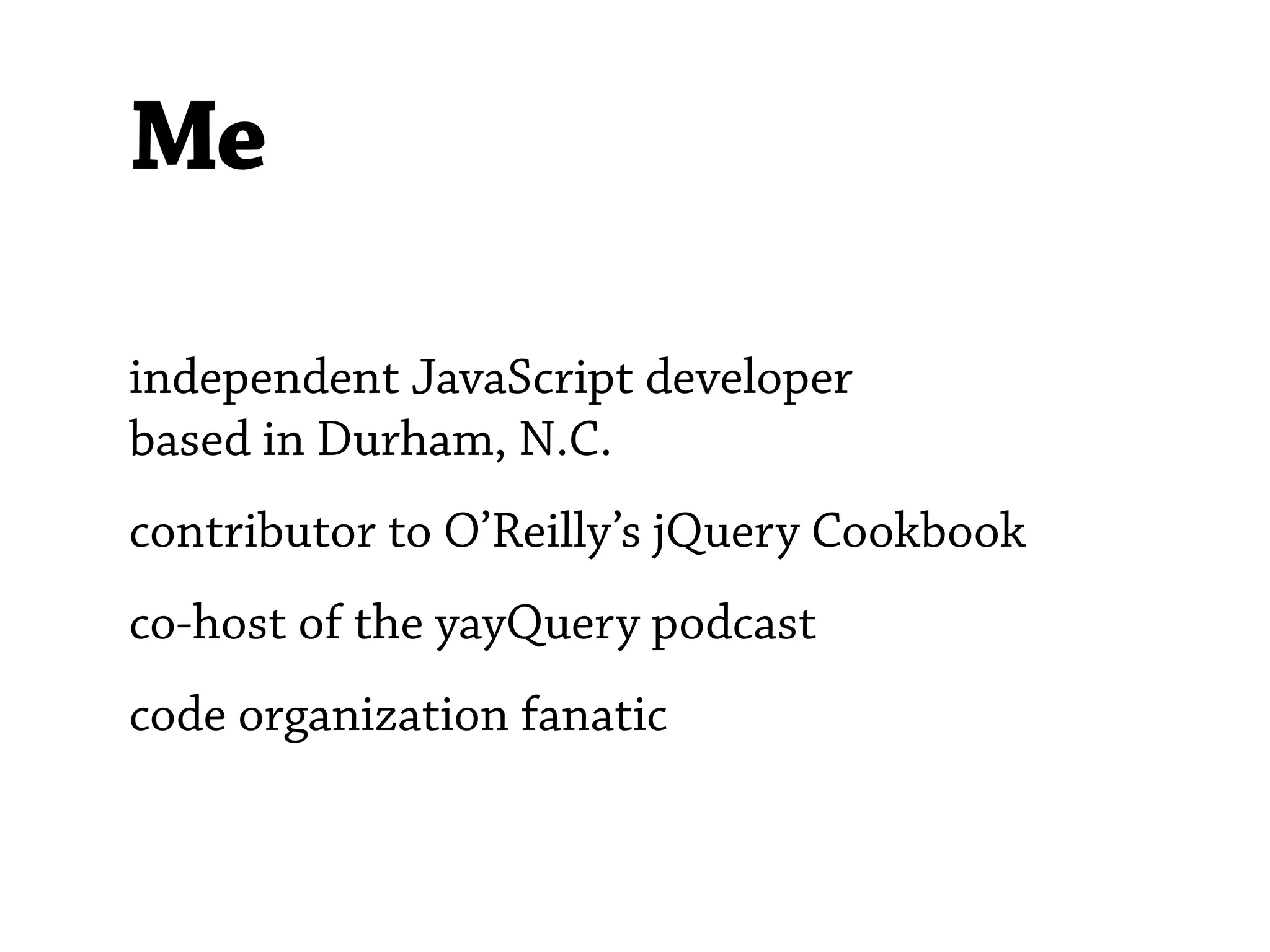

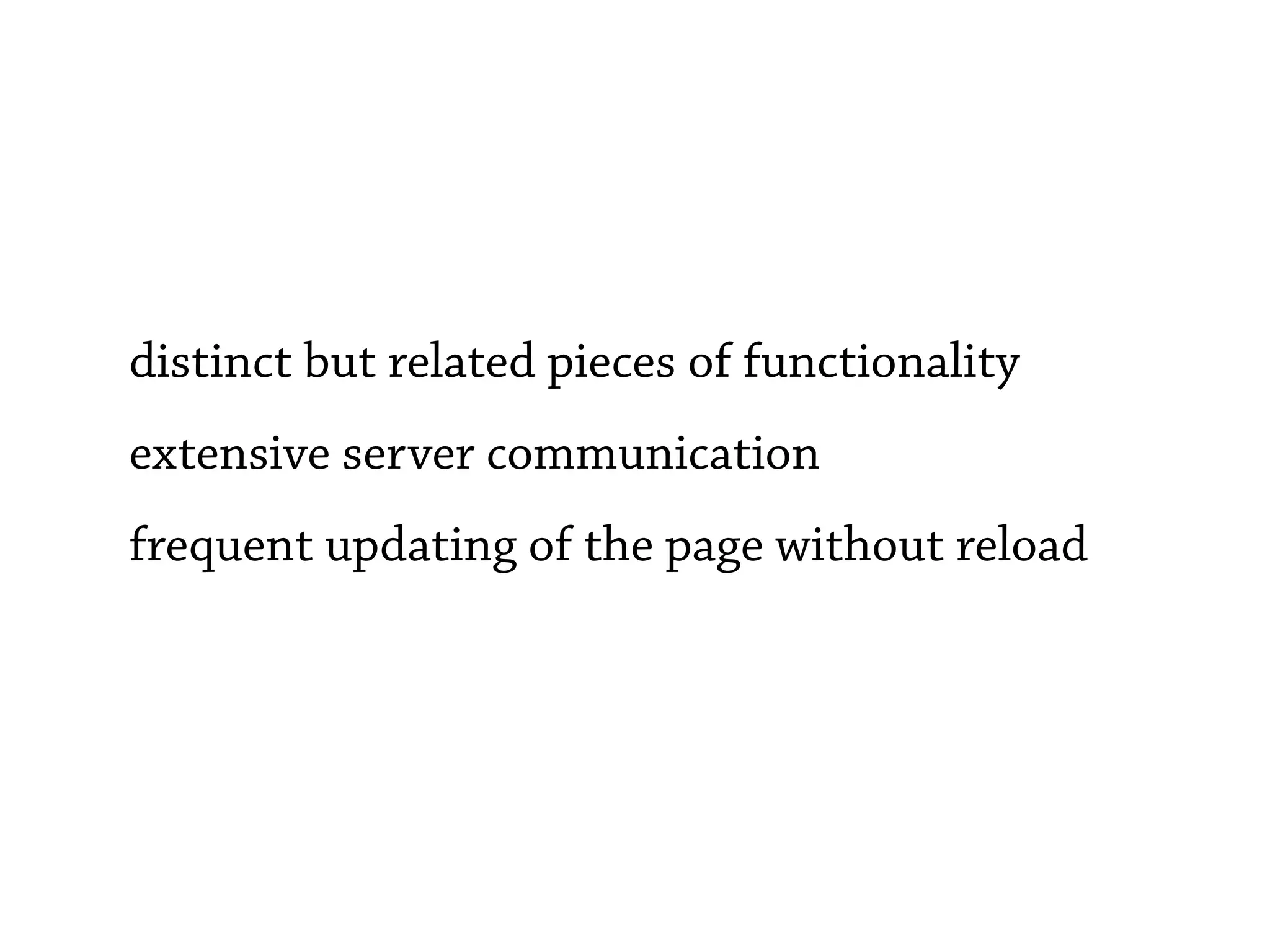
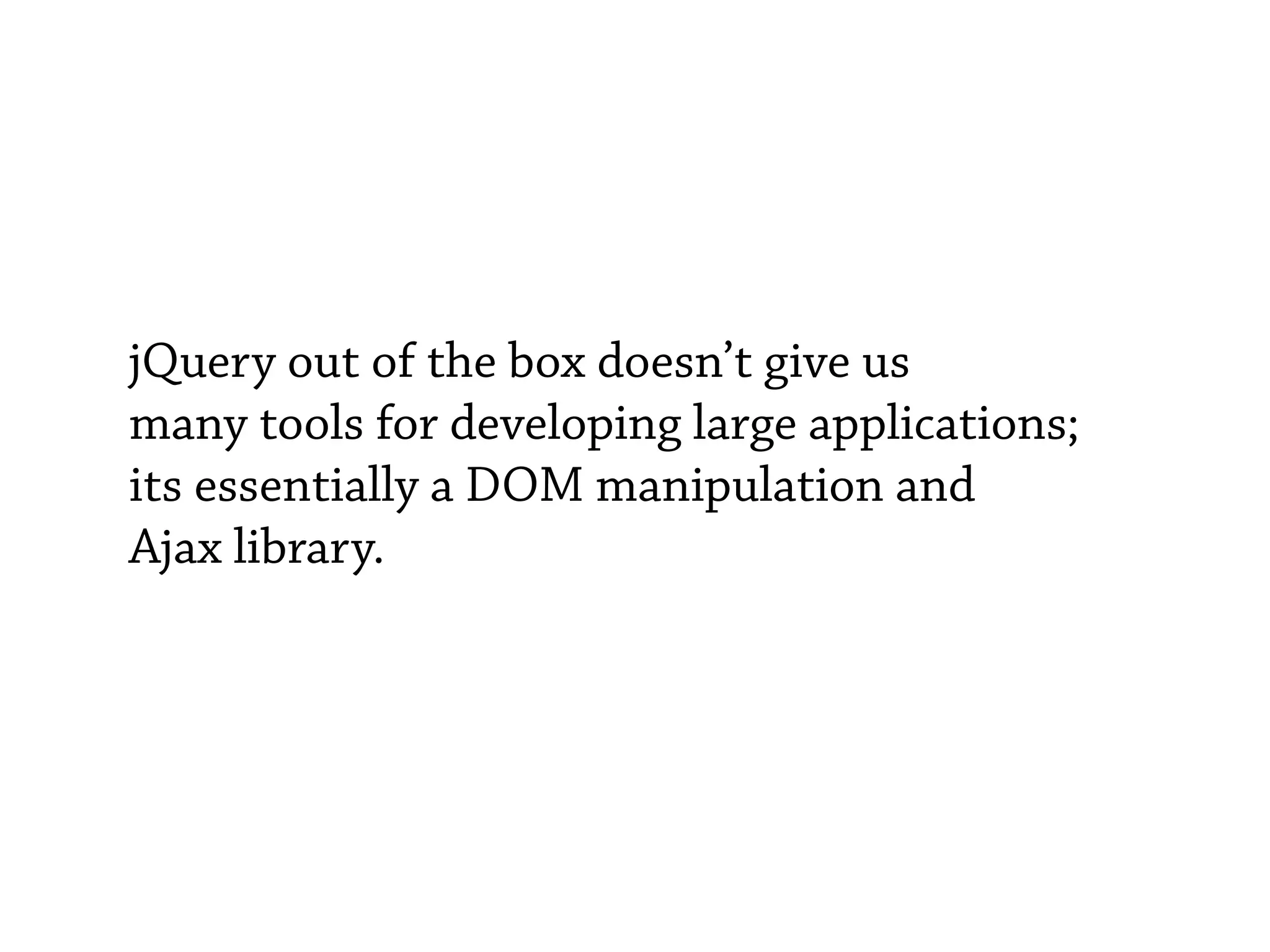
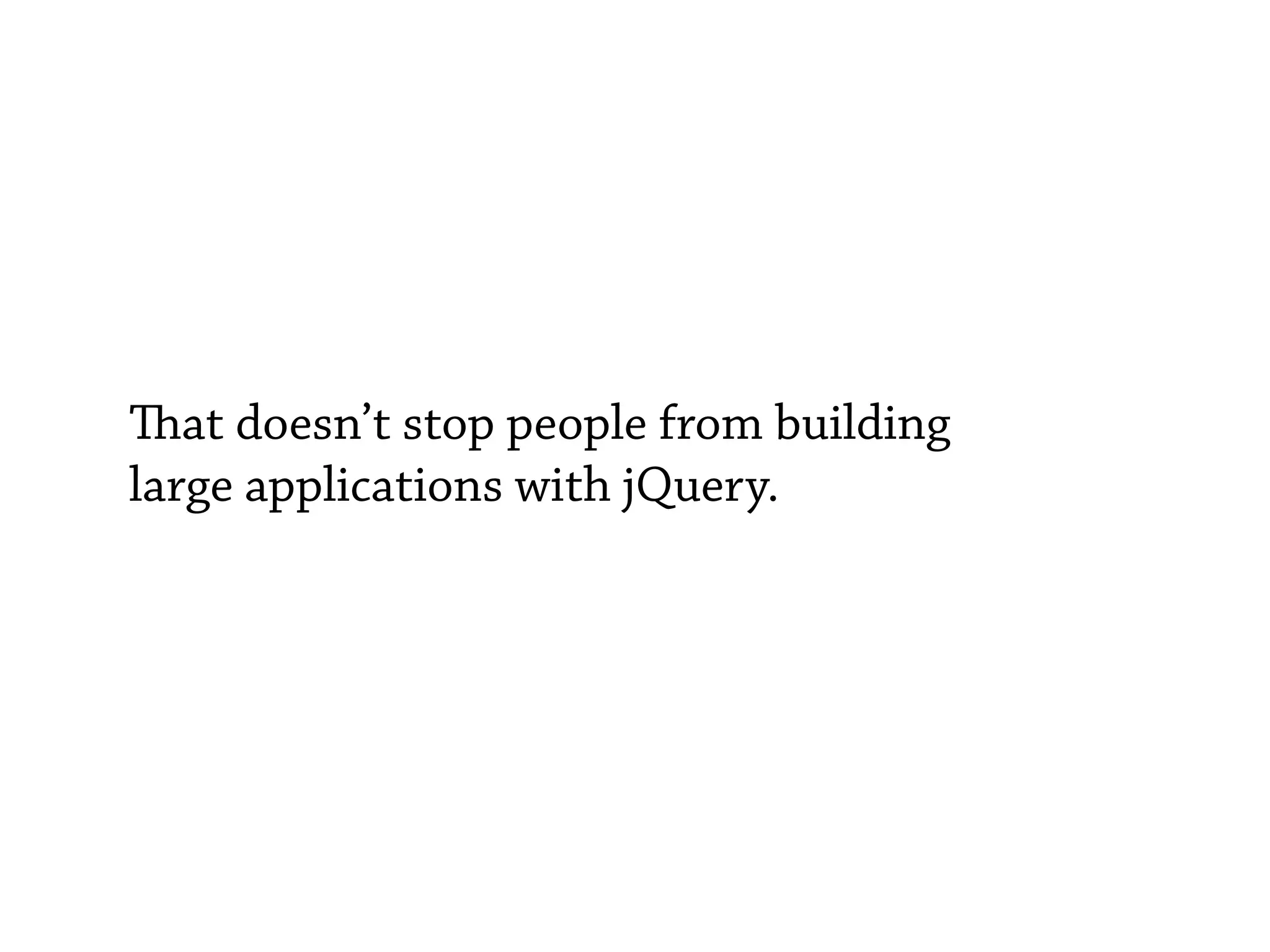
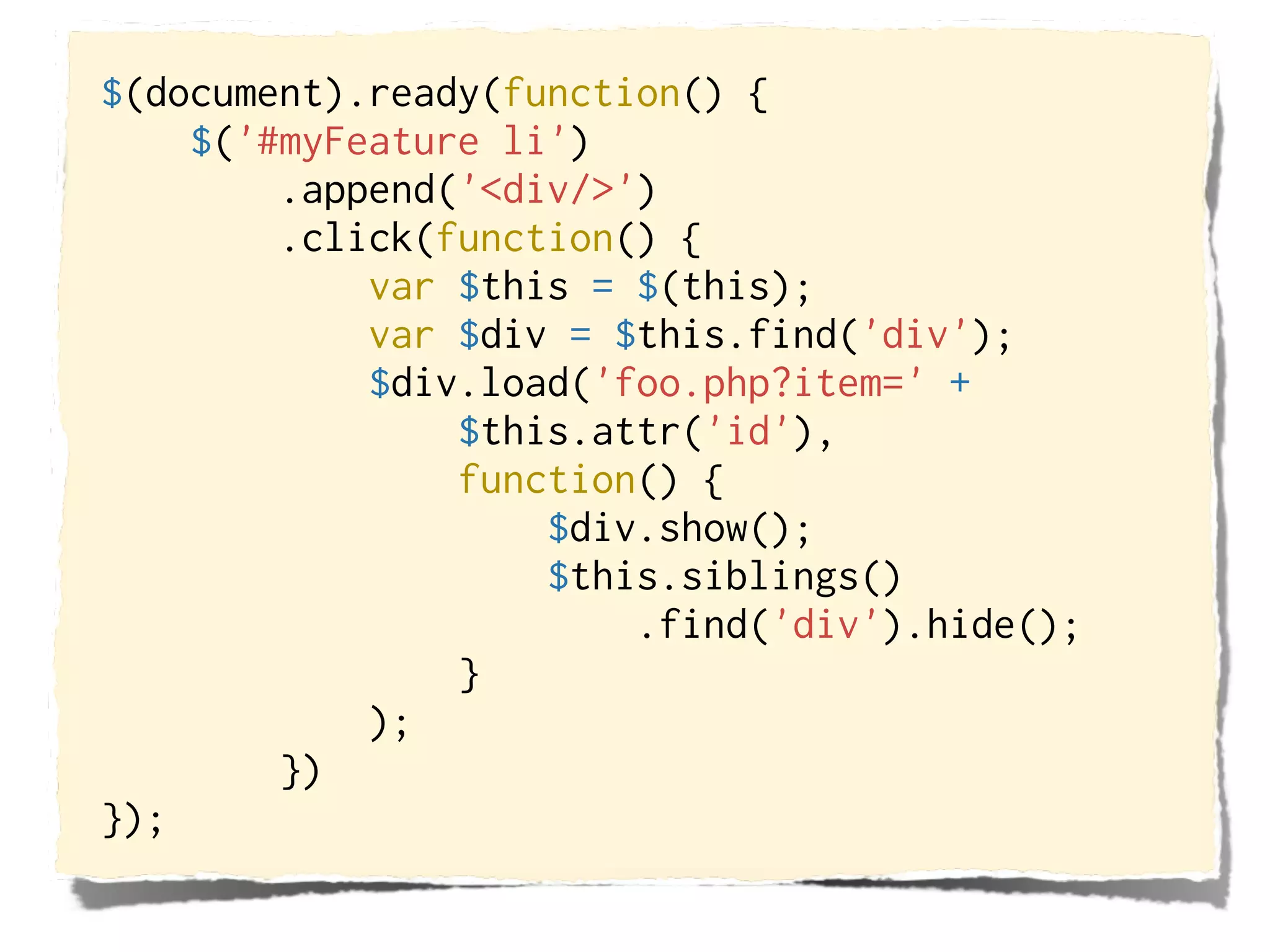
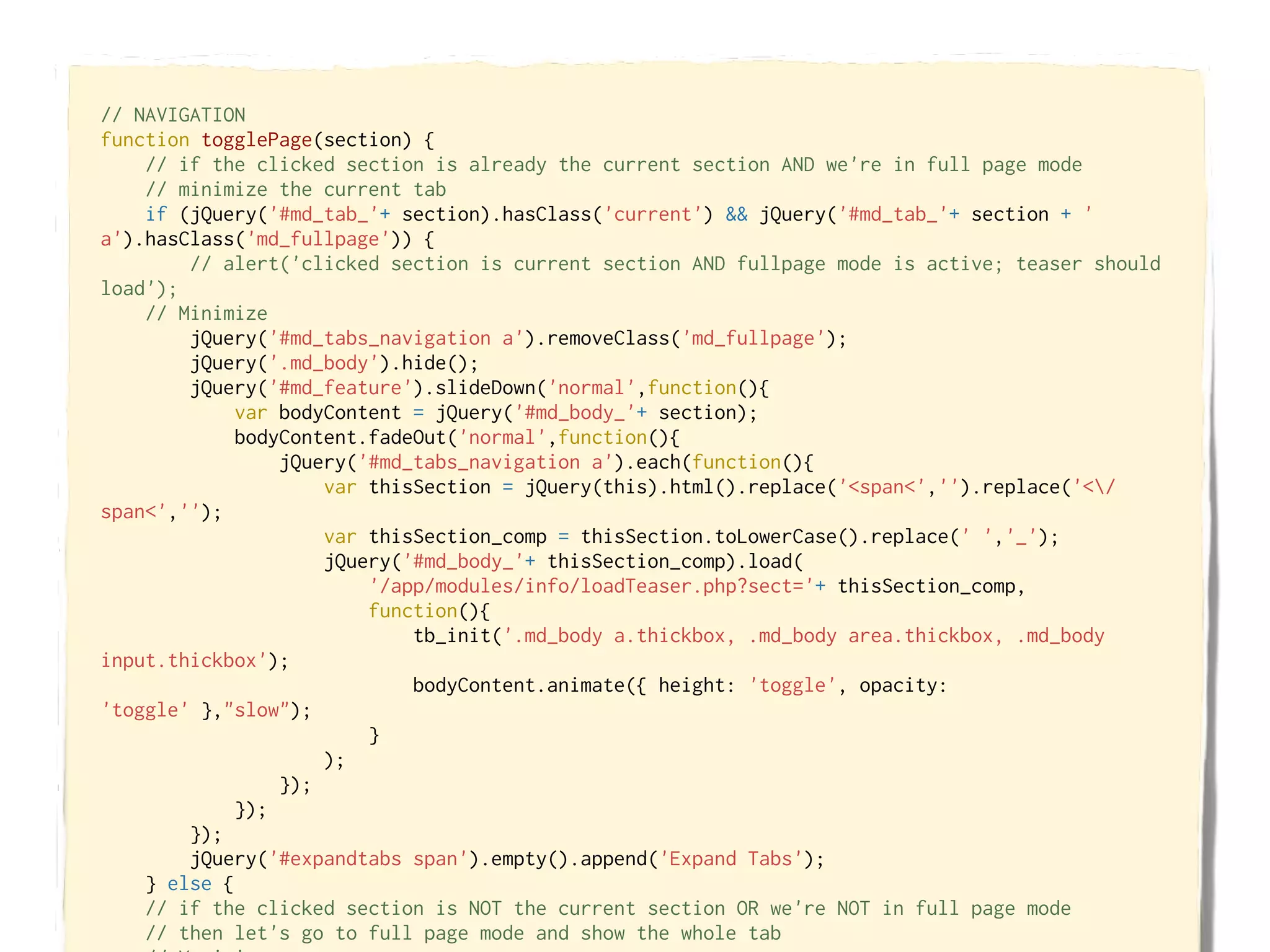
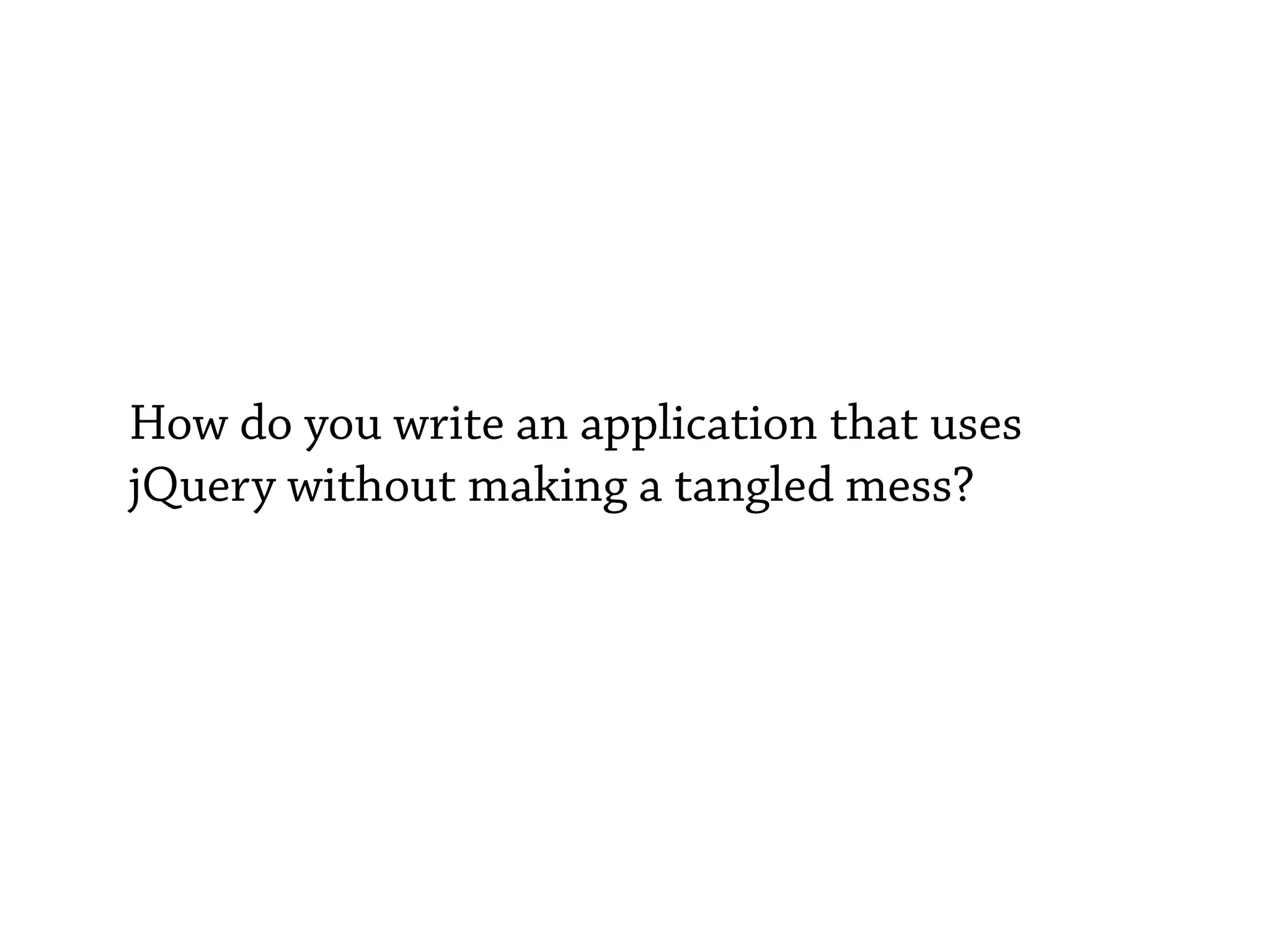
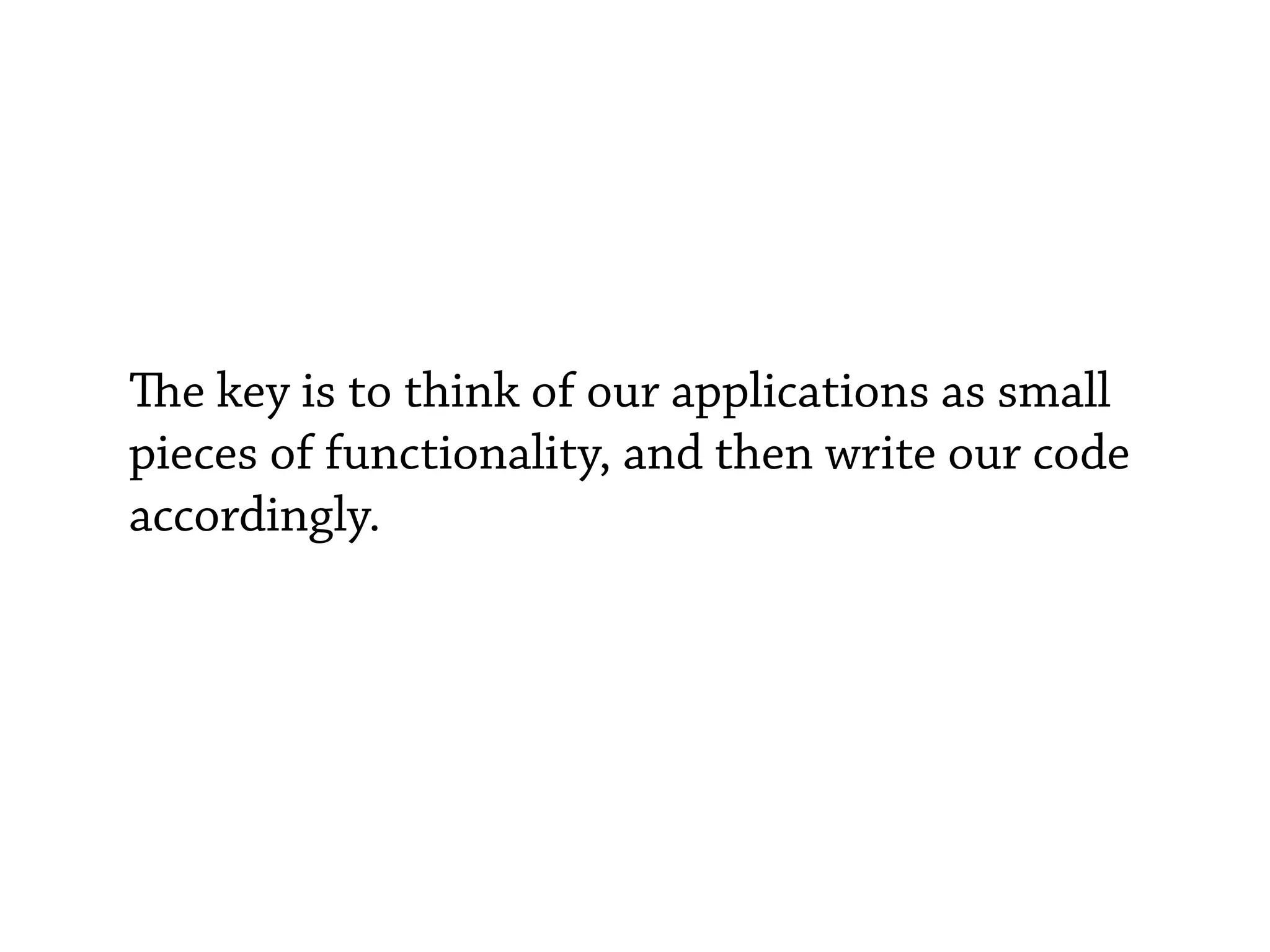
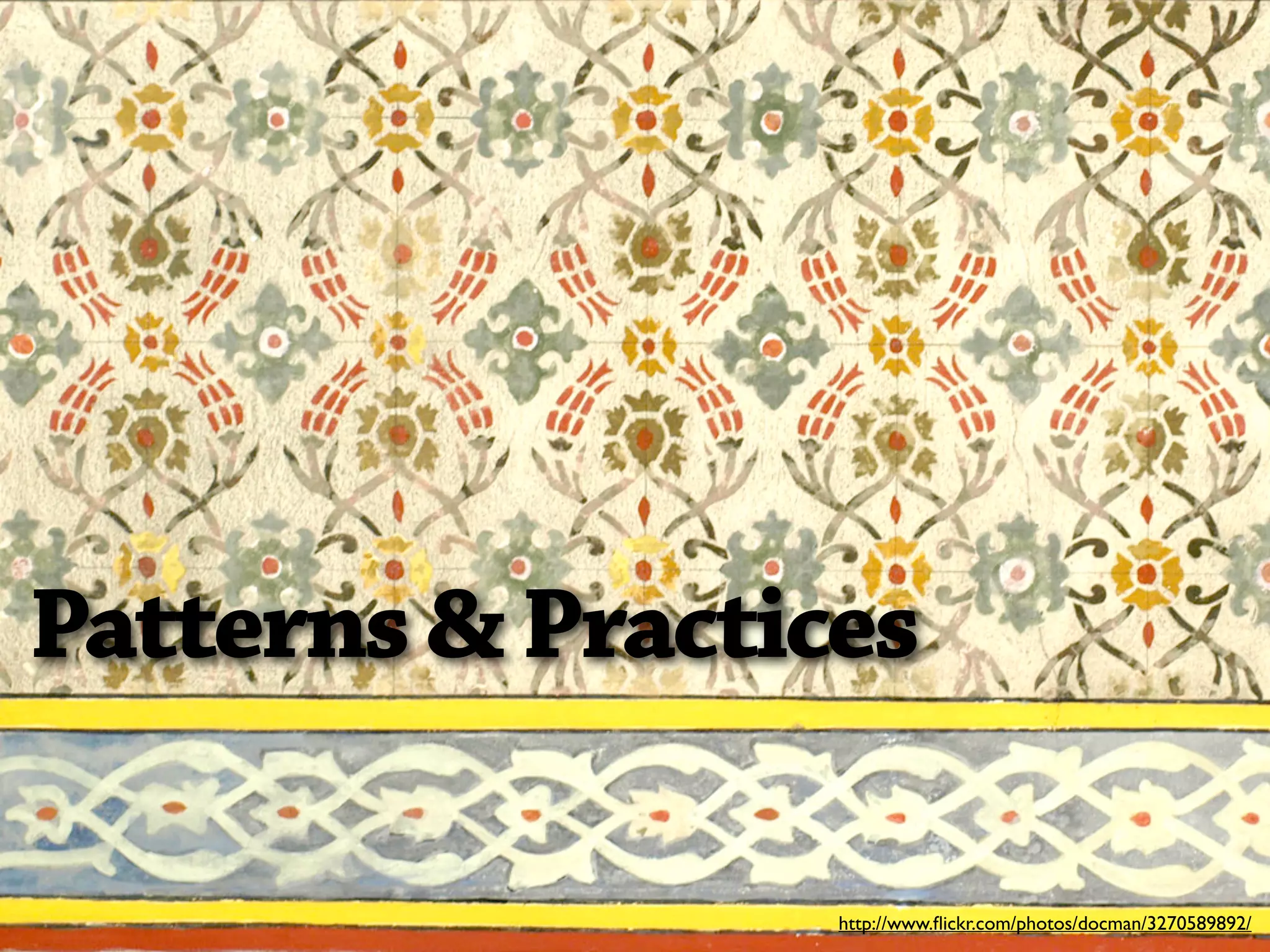
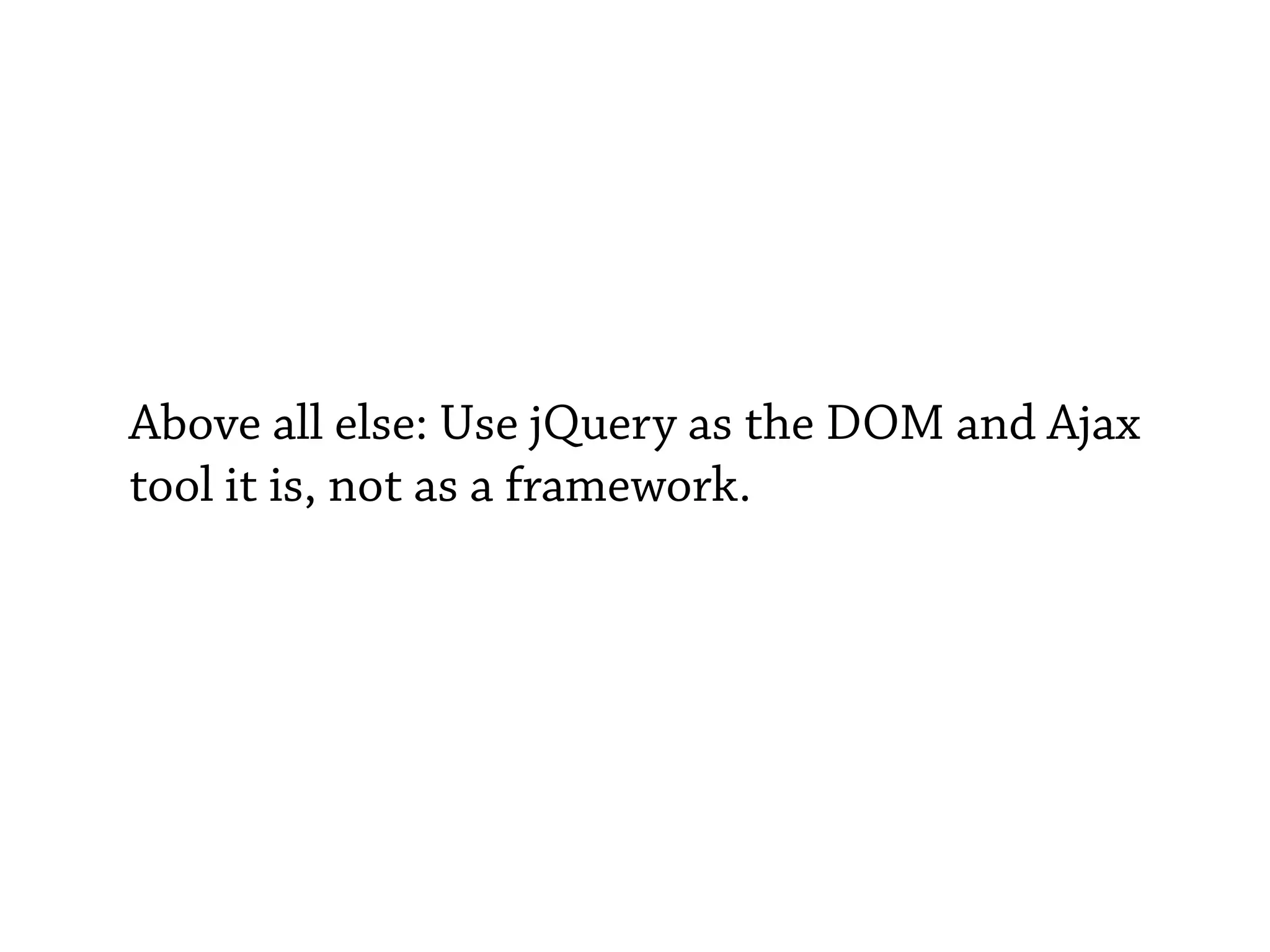
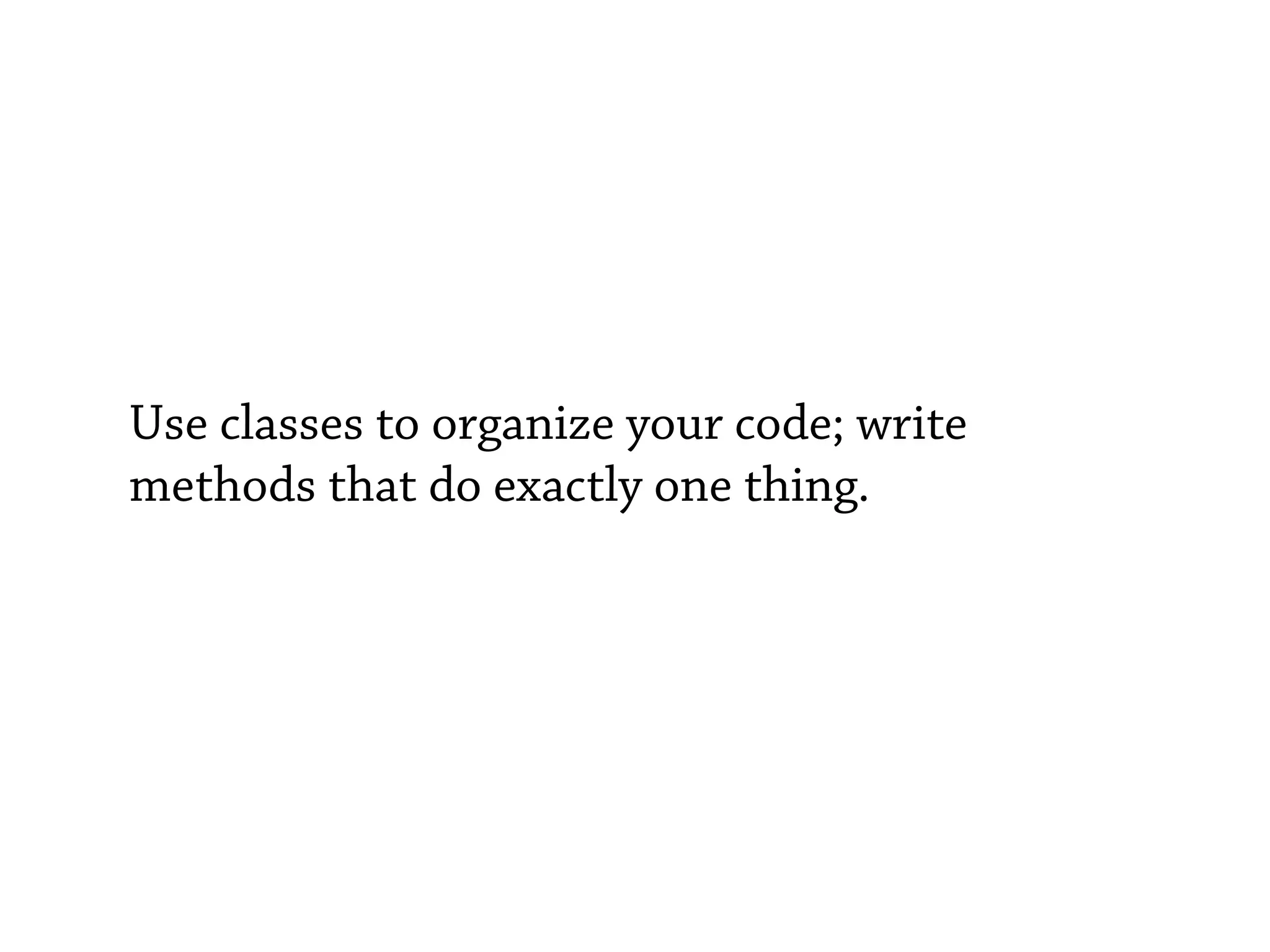
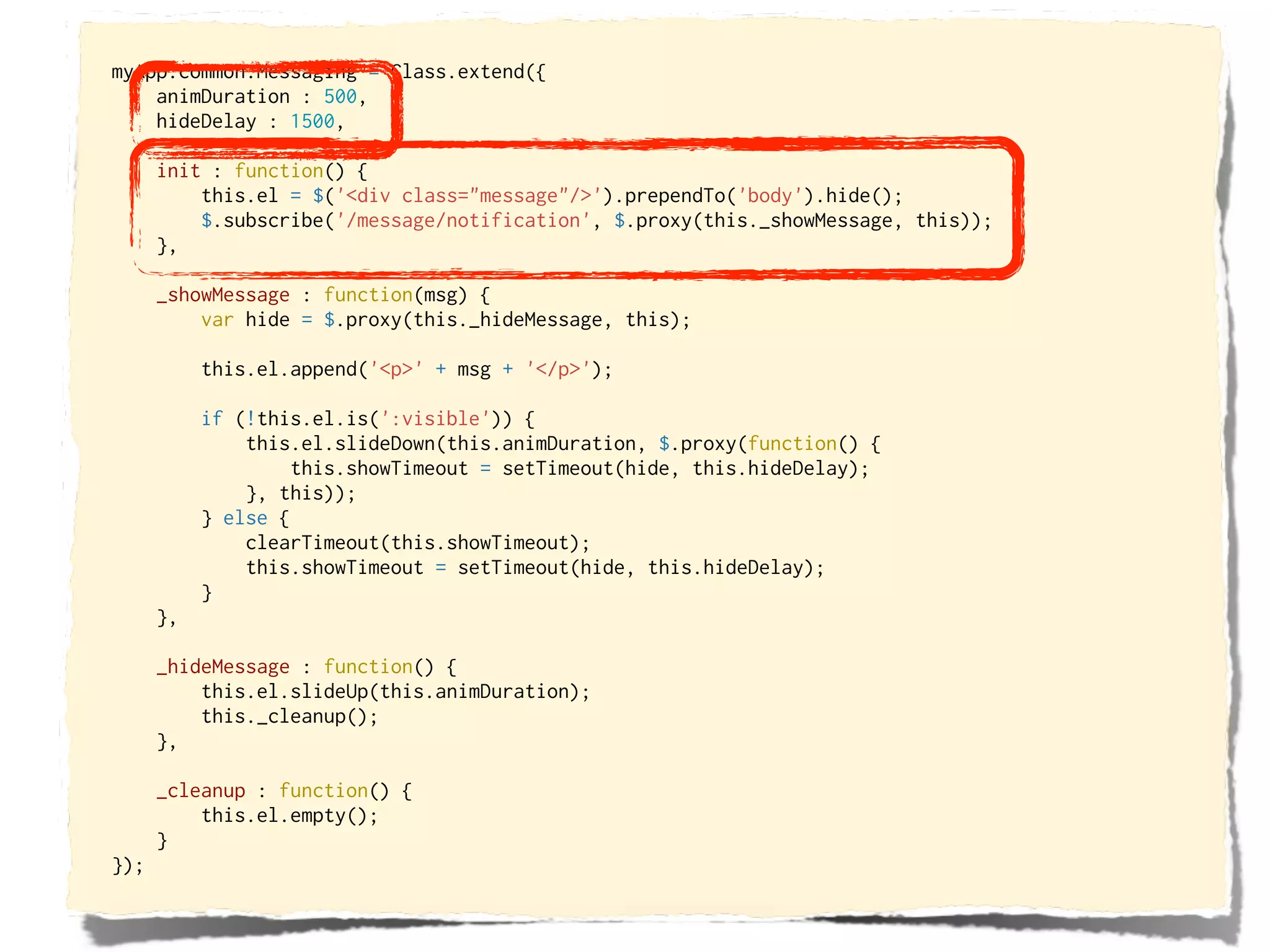
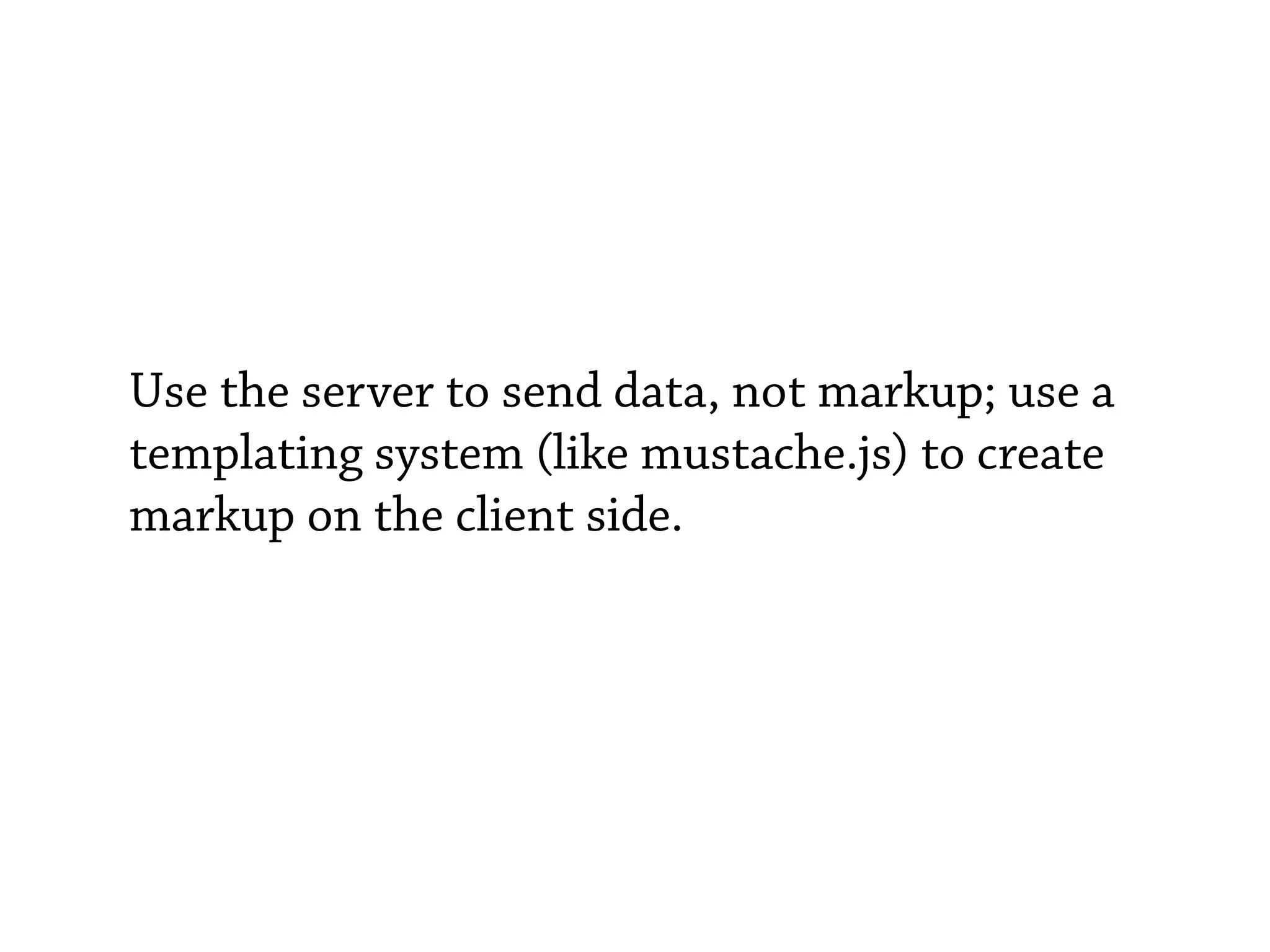
![myApp.widgets.Tools = Class.extend({
itemTemplate : '<li>' +
'<input type="checkbox" name="{{description}}" checked>' +
'<label for="{{description}}">{{description}}</label>' +
'</li>',
services : [],
init : function(el) {
this.el = el;
this.el.delegate('input', 'click', $.proxy(this._handleChoice, this));
$.subscribe('/service/add', $.proxy(this._handleAdd, this));
},
_handleChoice : function(e) {
var input = $(e.target),
service = input.attr('name');
$.publish('/service/' + service + '/toggle', [ input.is(':checked') ]);
},
_handleAdd : function(service) {
if ($.inArray(service, this.services) >= 0) { return; }
var html = Mustache.to_html(this.itemTemplate, { description : service });
this.el.append(html);
}
});](https://image.slidesharecdn.com/large-jquery-apps-100428110214-phpapp01/75/Building-Large-jQuery-Applications-16-2048.jpg)
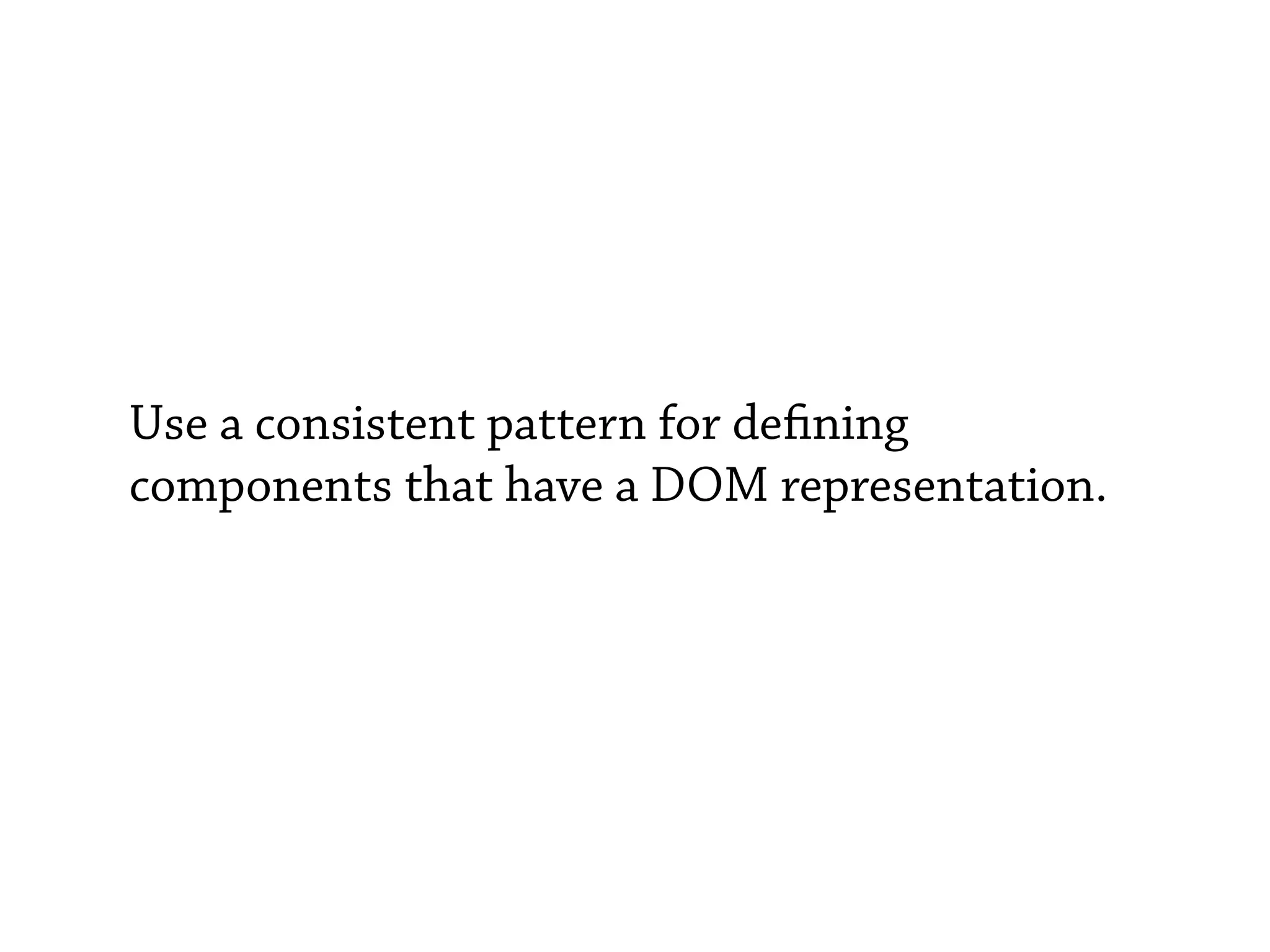
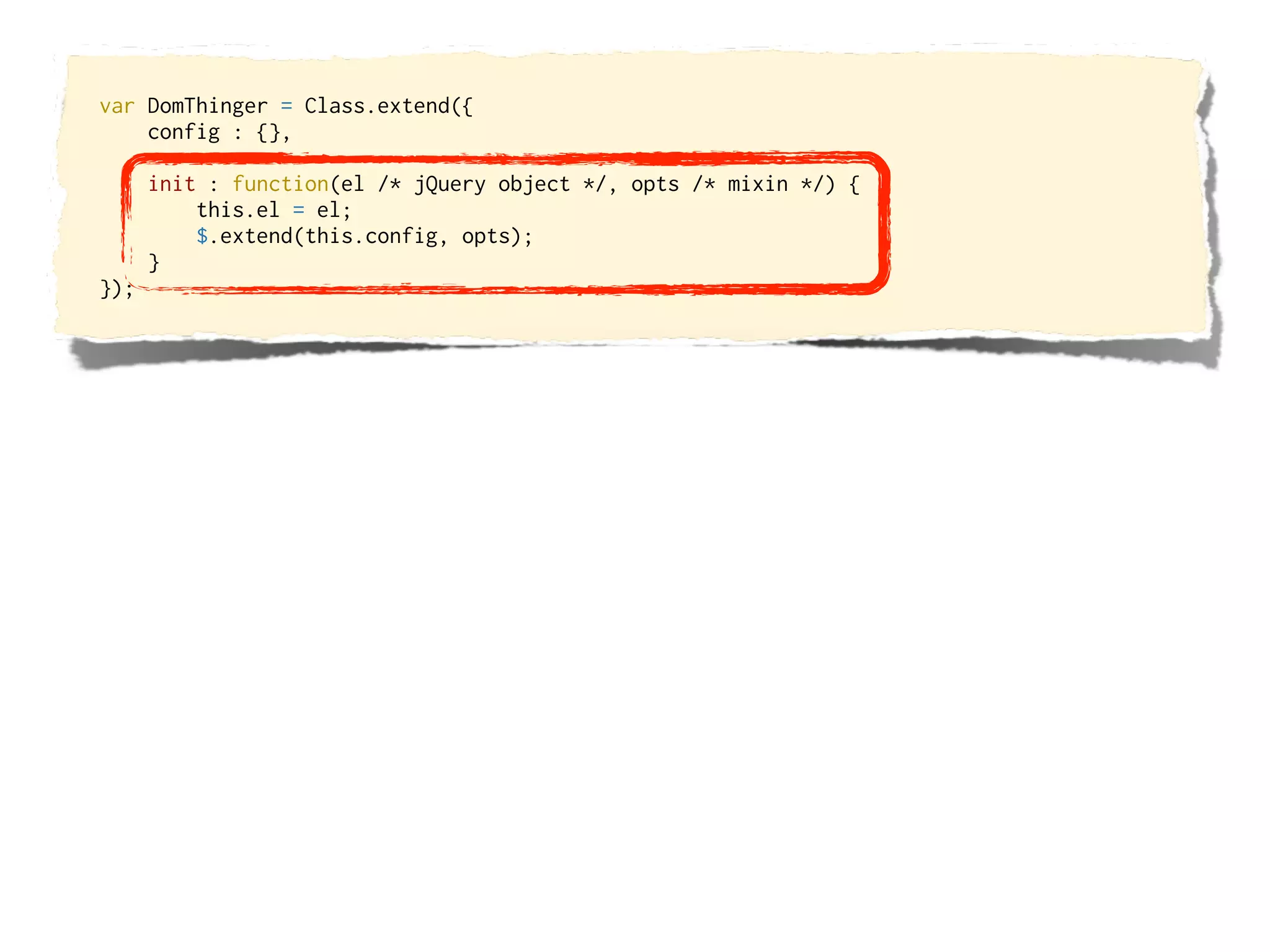
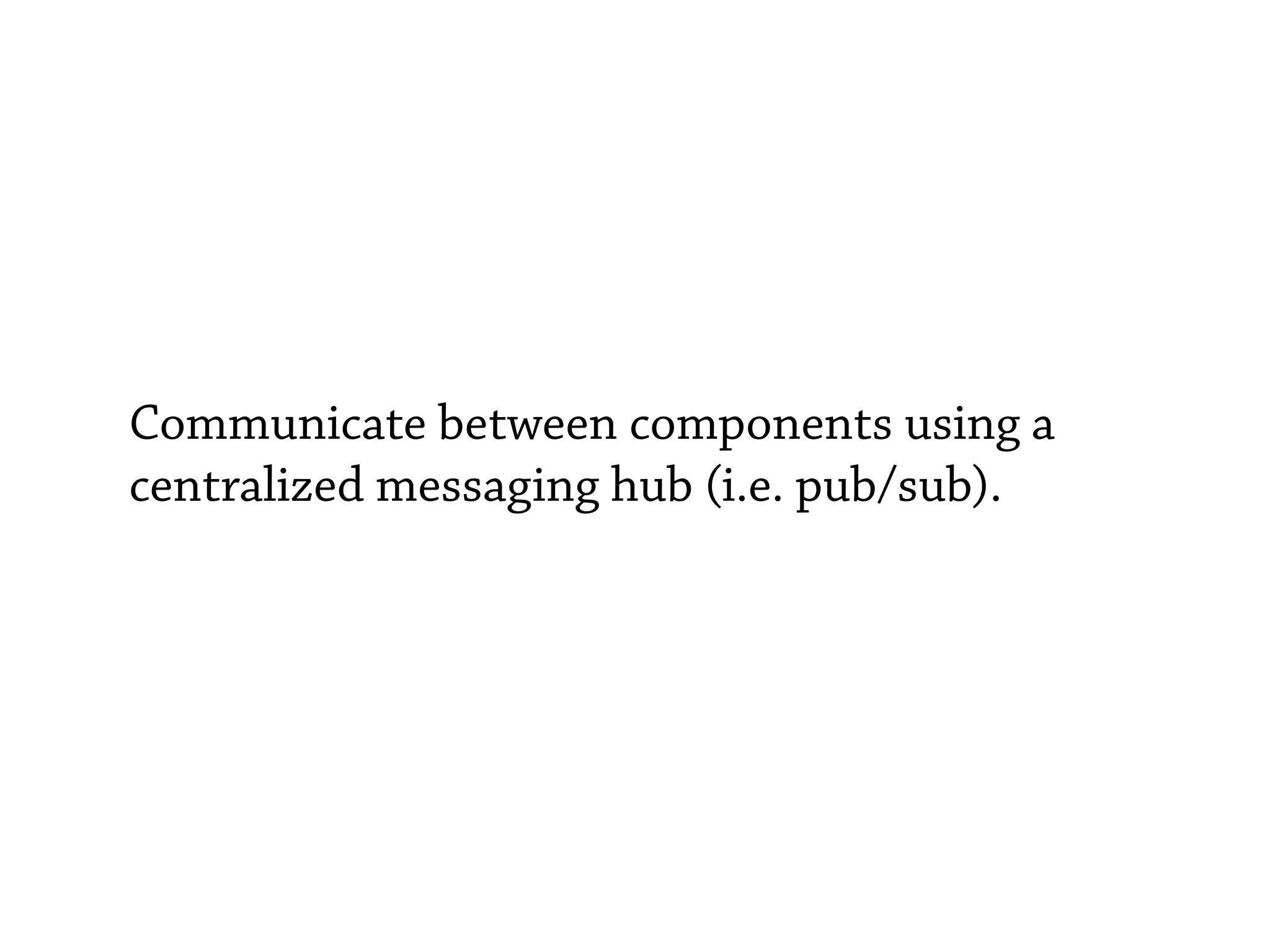
![myApp.common.Messaging = Class.extend({
init : function() {
this.el = $('<div class="message"/>').prependTo('body').hide();
$.subscribe('/message/notification', $.proxy(this._showMessage, this));
},
_showMessage : function(msg) { /* ... */ },
_hideMessage : function() { /* ... */ },
_cleanup : function() { /* ... */ }
});
myApp.services._base = Class.extend({
description : '',
init : function(opts) {
$.subscribe('/search/term', $.proxy(this._doSearch, this));
$.publish('/message/notification',
[ 'Service ' + this.description + ' added' ]
);
},
_doSearch : function(term) { /* ... */ },
});](https://image.slidesharecdn.com/large-jquery-apps-100428110214-phpapp01/75/Building-Large-jQuery-Applications-20-2048.jpg)
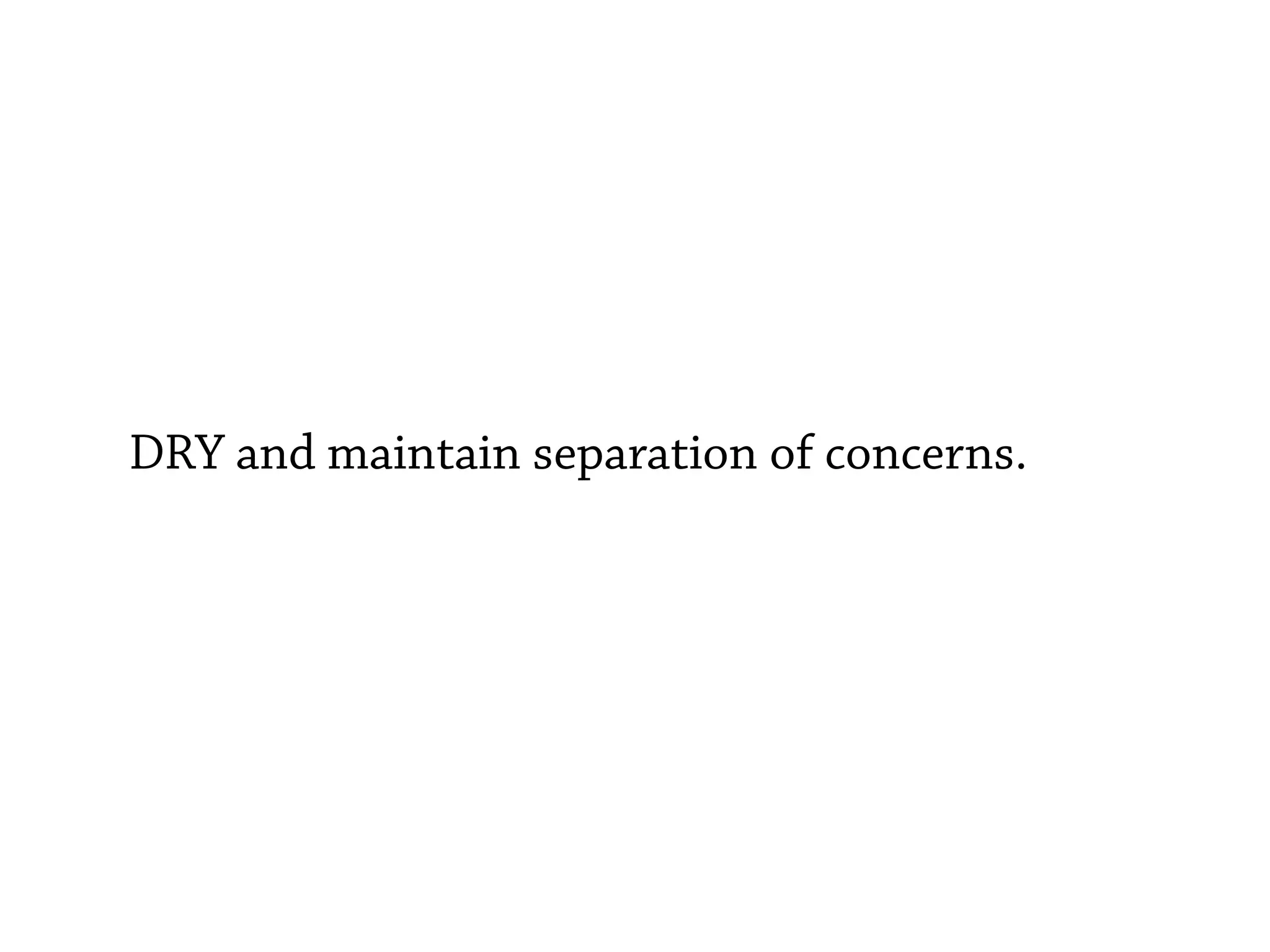
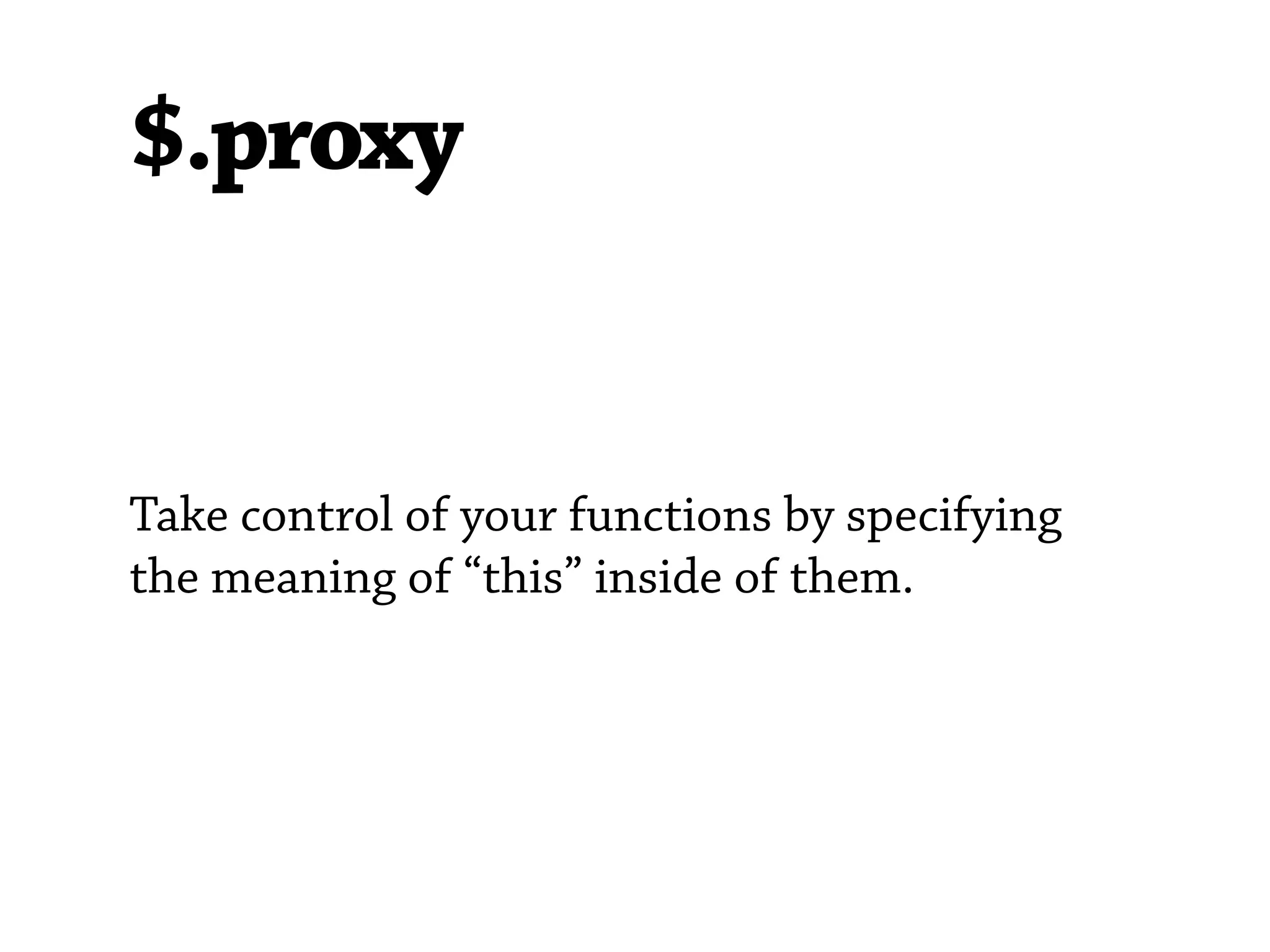
![myApp.services._base = Class.extend({
description : '',
init : function(opts) {
$.subscribe('/search/term', $.proxy(this._doSearch, this));
$.publish('/message/notification',
[ 'Service ' + this.description + ' added' ]
);
},
_doSearch : function(term) { /* ... */ },
});](https://image.slidesharecdn.com/large-jquery-apps-100428110214-phpapp01/75/Building-Large-jQuery-Applications-23-2048.jpg)
